|
Me Sahyadri |
|
November 2018 |
|
Volume 5, number 21, # 75 |
|
Mysteries of Maval Caves – Induri Caves |
Please use minimum 1280 pixel horizontal screen resolution for viewing. Please be patient while all the images in webpage are loaded. Please do not use the images for any commercial use without permission. Text in Marathi and English is not exact translation. Please give sufficient time to allow the photographs to load. Special thanks to all those who helped me during the compilation and for the help and guidance during the activity. |
|
|
|
|
देशाची आर्थिक प्रगती व्हावी असे सर्व नागरिकांना वाटणे सहाजिक आहे. अर्थकारणामुळे मिळणारा रोजगार, समृद्धी यासाठी सर्वांनाच आर्थिक प्रगती हवी हवीशी वाटते. आर्थिक प्रगती होताना, त्याचा दिर्घकाळात समाजावर, निसर्गावर, वातावरणावर दुष्परिणाम होणार नाही याची काळजी घेणे महत्वाचे आहे. मनुष्याच्या भावी पिढ्यांना पाणी, शुद्ध हवा, योग्य वातावरण मिळत रहावे अशी भावना मनात रुजणे महत्वाचे आहे. वाढत्या आर्थिक प्रगतीमुळे नैसर्गिक संपदेवर ताण येतो. प्रगतीसाठी प्रदुषण होते. जंगले, माळराने, व इतर अधिवास नष्ट होतात. वसुंधरेवर रहाणाऱ्या इतर जीवांचा मात्र मनुष्य फारसा विचार करत नाही. आर्थिक प्रगती करताना, मनुष्य निसर्गाची हानी करत आहे. मुळताच माणसाला निसर्गाचे महत्व समजणे हे सध्याच्या आपल्या प्रगत जीवनशैली मुळे अवघड झाले आहे. आर्थिक प्रगती, समाजाची प्रगती व निसर्ग संपदेची निगा, यांचा समतोल राखणे काळाची गरज आहे.
सह्याद्री (पश्चिम घाट) हा एक नैसर्गिक संपदेचा, वैविध्यतेचा, भौगोलिक व ऐतिहासिक ठेवा आहे. वाढत्या मानवी अतिक्रमणाचा, सह्याद्रीच्या विविध घटकांवर होणारा दुष्परिणाम भविष्यात आपल्यालाच धोका निर्माण करेल, यात शंका नाही. शुद्ध पाणी, हवा व उर्जा, भावी पिढीला मिळण्यासाठी, नंद्यांचे उगम असलेला सह्याद्री व त्याभागातील जंगले टिकवणे महत्वाचे आहे. सह्याद्रीच्या महत्वाच्या घटकांचे महत्व छायाचित्रांद्वारे प्रकट करण्याचा मी येथे प्रयत्न केला आहे. येथील पक्षी, प्राणी, वनस्पती, अधिवास, किल्ले व लेणी अशा विविध विषयांबद्दल आपण समजुन घेऊ.
|
|
As the economic development has taken the center stage, the balance between the environmental sustenance and socio economic development will be under the scanner. As most experts with balanced views have proclaimed, Indian wildlife and ecological system sustenance will be under threat, unless precautions are taken with the help of appropriate research and long term national interests. As we encounter the economic development, many habitats which indirectly or directly help sustainable development will be damaged. The awareness to gauge the success by sustainable development and not by year to year growth is a distant dream any environmentalist will assume in current scenario.
Western ghats, or Sahyadri as we all call it as, is a treasure trove of spectacular landscapes, biodiversity, flora, fauna, some amazing geological wonders and man made monuments. With the increasing pressure from human encroachment, all these elements are under stress and in turn are under depletion. Western ghats should be left untouched by human beings, to protect their future generations from getting short of resources, such as water, energy and clean air. The important elements of western ghats, which need protection are highlighted in the new version of Photo journal, Me Sahyadri Magazine.
|
|
|
| |
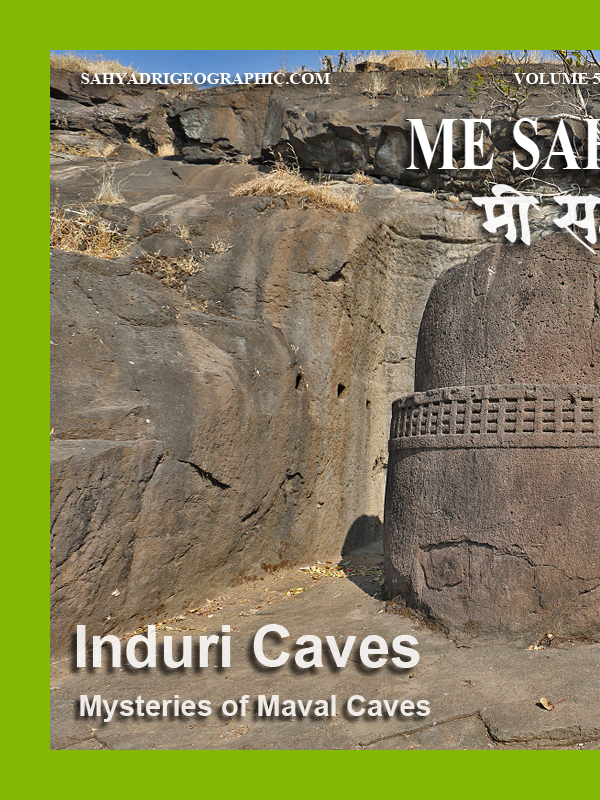 
|
| |
| Me Sahyadri – November 2018 A
|
| |
|
|
मावळ लेणी मोहेमेचा सारांश :
मावळातील भाजे, बेडसे आणि कार्ले लेणी अप्रतिम आहेत. त्यामुळे या भागातील इतर लहान लेण्यांकडे फारसे कोणी फिरकत नाही. आम्ही चार समविचारी मित्रांनी मात्र या हरवलेल्या लेण्यांची शोधाशोध करण्याचे ठरवले. साईप्रकाश बेलसरे, निनाद बारटक्के, अमेय जोशी आणि विवेक काळे असा संघ तयार झाला. एकोणीसाव्या शतकात जेम्स बर्जेस आणि जेम्स फर्ग्युसन या दोन इंग्रज विद्वानांनी भारतातील लेणी धुंडाळली. त्यांनी १८८० साली "केव्ह टेम्पल्स ऑफ इंडिया" या पुस्तकाचे प्रकाशन केले. या पुस्तकात मावळातील लहान लेण्यांचा फारसा तपशिल नसला तरी, या मावळातील इतर लहान लेण्यांबद्दल ५-६ वाक्यांमध्ये आम्हाला त्रोटक का होईना माहिती मिळाली. त्यांनी उल्लेख केलेली, काही ठिकाण सापडली, तर काही ठिकाण काहीही केल्या सापडेनात. कदाचित न सापडलेली ठिकाण नष्ट झाली असावीत. पण मोहिमे दरम्यान नविन, ज्या ठिकाणांचा पुस्तकात उल्लेख नव्हता, पण ग्रामीण भागातल्या स्थानिकांना माहिती होती अशी ठिकाण सापडली.
जेम्स बर्जेस आणि जेम्स फर्ग्युसन या दोन इंग्रज विद्वानांनी लिहिलेल्या प्रत्येक शब्दाचा धागा म्हणुन वापर करायचे ठरले. कामांचे वाटप झाले.
शोध मोहिमेत लागणाऱ्या खाऊची सोय करणे, विषय आणि ठिकाणाचा आधी अभ्यास करणे, प्रवासाची सोय करणे, गावकऱ्यांकडे लेण्यांबद्दल चौकश्या करणे, मोहिमे दरम्यान गचपणातुन वाट शोधणे, लेण्याच्या अवशेषांची मोजमाप घेऊन त्याची चित्रे/नकाशे काढणे, छायाचित्रे काढणे, जि. पि. एस. यंत्रावर वाटेबद्दल माहिती नोंदवणे, लेण्यात लहान बारकावे शोधणे, लेण्यांचे विश्लेषण करणे, नोंदी करणे, अशी वेगवेगळ्या प्रकारची काम वाटुन घेण्यात आली.
प्रत्येक ठिकाणी जाताना, घरचा अभ्यास करावा लागला. जुनी पुस्तके, नकाशे धुंडाळले गेले. गावातल्या मित्रांची मदत झाली. गावागावात चौकश्या केल्या. गडद, लेणे, गुहा, कपार, भोगदा, विहार, पांडवांनी एका रात्री बनवलेली गुहा असे अनेक शब्द वापरुन चौकश्या झाल्या. बहुतेक वेळा असे काही नाही इथे ! तुम्ही कुठुन आलात ? असे उत्तर मिळाले. लेणे आहे का इथे कुठे असा प्रश्न विचारला तर आम्हाला बहुतेकांनी कार्ले/बेडसे/भाजे लेण्यांचा पत्ता दिला. पण बकऱ्या, गाई घेऊन डोंगरात फिरणारे गुराखी मात्र दरवेळेला मदतीला धाउन आले. वाटांचे आणि दिशांचे अंदाज मिळाले. जुजबी माहिती घेऊन ठिकाण शोधणे या प्रकाराचा चांगला सराव झाला. कधी काटेरी करवंदींच्या खालुन खुप सरपटाव लागल तर कधी घसाऱ्यावर हात टेकावे लागले.
लेण्यांमध्ये मोठे कोळी (स्पायडर), कातळ पाली, वटवाघळ, मधमाश्या, पाकोळ्या, घुबडं भेटले. आमच्या मुळे त्यांना उगाच त्रास झाला, असा अपराधीपणा वाटला. प्रत्येक शोधमोहिमेला यश आलेच असे नाही. काही ठिकाण सापडली नाहीत. तर काही ठिकाण आमच्याच मनाचे खेळ आहेत असे लक्षात आले. बहुतांश ठिकाणी कोणत्या ना कोणत्या प्रकारची जोखिम होती. वटवाघळ, लेण्यातील धुळ, काळोख, मधमाश्या, काटेरी वनस्पती, घसारा, गुहेतील ऑक्सिजन चा अभावआणि इतर न दिसणारे धोके यावर मात झाली. मोहिमेसाठी, विजेऱ्या, जि. पि. एस., मोजपट्या, दोऱ्या, लेजर यंत्र, नकाशे, गुगल मॅप, जाळीच्या टोप्या या सर्व जंत्रीचा उपयोग झाला. एकूण मिळुन २० नविन अपरिचित ठिकाण/वास्तु पहायला मिळाल्या, मावळाचा भुगोल जरा अजुन नीट लक्षात आला. नविन प्रश्न पडले आणि नविन कोडी सोडवयाला मिळाली. तर्क वितर्क झाले.
|
|
About the Maval Cave exploration :
The main caves in Maval region are so significant that other small hermit caves are often overlooked. We as a team of four like minded friends, decided to explore the Maval region for these small hermit caves. We explored and found few beautiful places. The very concept of creating a hermit cave somewhere high up in the hills is fascinating. These places often are full of tranquility and nothing else. With very little architectural evidences and clues, the academicians have obviously ignored these places. It was James Fergusson and James Burgess, during their exhaustive study of “Cave temples of India, 1880” mentioned few of these hermits in Maval region of Pune district. With the little clues and exhaustive investigation, team of four members, Saprakash Belsare, Amey Joshi, Ninad Bartakke and Vivek Kale started the exploration. The journey to locate, trek and analyse these hermit caves itself was fascinating. We met many villagers who were unaware of these places, but also met few shephards who were precisely aware of the hermits and gave us tentaive guidance.
There is a very brief mention about the misceleneous caves of Maval by James Fergusson and James Burgess in their work. Based on available information we decided to search these caves and monuments. The activities were planned. The food, travel , track exploration in difficult and routes full of foliage, enquiring the villagers about the caves, taking measurements and drawing skecthes and maps, photography, GPS data collection, making notes and analysing the information, observing the minor details of the caves etc activites were distributed amongst the team members. We met many bats, owls, geckos, lizards, large spiders, martins, honeybees during the treks. Often we felt sad that we disturbed them to see the caves. Most of these places are hazardous due to pitch darkness, bats, dust, thorny plants, honeybees, low oxygen level in caves and rock patches etc. Not all the attemps were successful. Sometimes we could not find the intended places and sometimes we realised that the cave was just our imagination and did not exist. Nevertheless we saw about 20 new strange caves/monuments during the exploration. The high intensity torches, GPS tool, measuring tapes and measuring laser tool, Honeybee protection caps, maps, google maps, photographs etc were useful during the mission.
In this photoessay, I have compiled the information and photographs of Induri Caves, Maval, amazing, simple but questions-thrower cave.
|
|
|
| |
  |
| The banner has been published here to improve the awareness of the trekkers and tourists visiting the various mountain forts, mountains in north western ghats. Please avoid accidents, by following good outdoor ethics such as no swimming in cisterns at mountain forts, no rock climbing without proper technical equipment and expertise. Please do not adventure, trek with any group or individually without understanding the risks associated. The frequency of the solo trekker fatalities have increased recently. Please strictly avoid solo treks. Please also avoid treks to mountains in large commercial groups, as it leads to damage to biodiversity of these high elevation ecological islands. Please respect the wildlife and biodiversity of the region. This has become more important as the ever increasing human interference is leading to severe damage to fragile ecosystems. Please be aware of the wildlife and biodiversity of the mountains before visiting these mountains. Please follow outdoor ethics. Follow ASI and Forest department rules. The concept of use of symbols for outdoor ethics was conceived and designed by "Sahyadri Trekker Bloggers Group". |
| |
|
|
| |
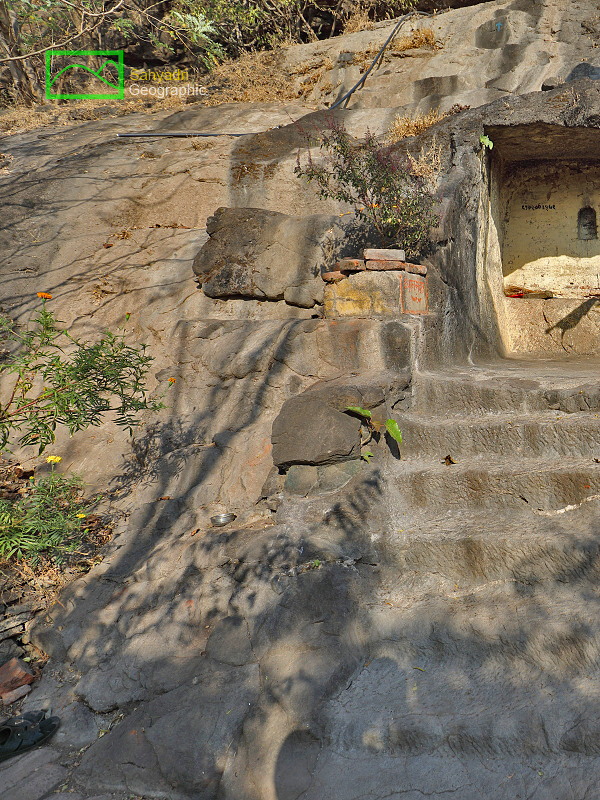 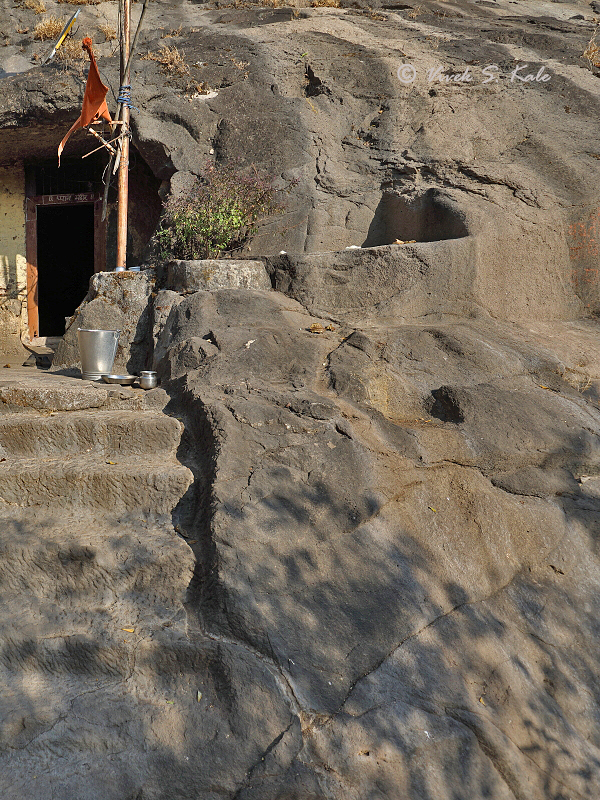 |
| |
| 1. Induri Cave #1, Maval Tehsil, Pune district, Maharashtra, India |
| |
|
|
| |
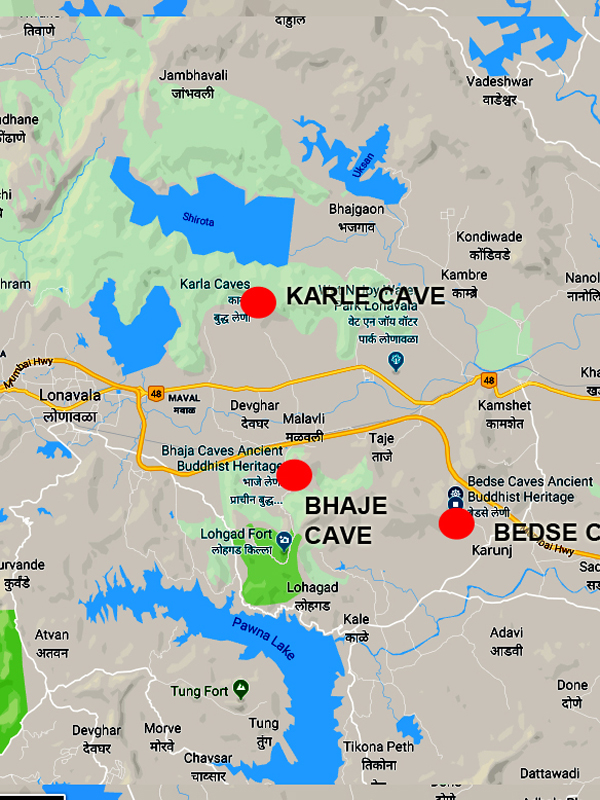 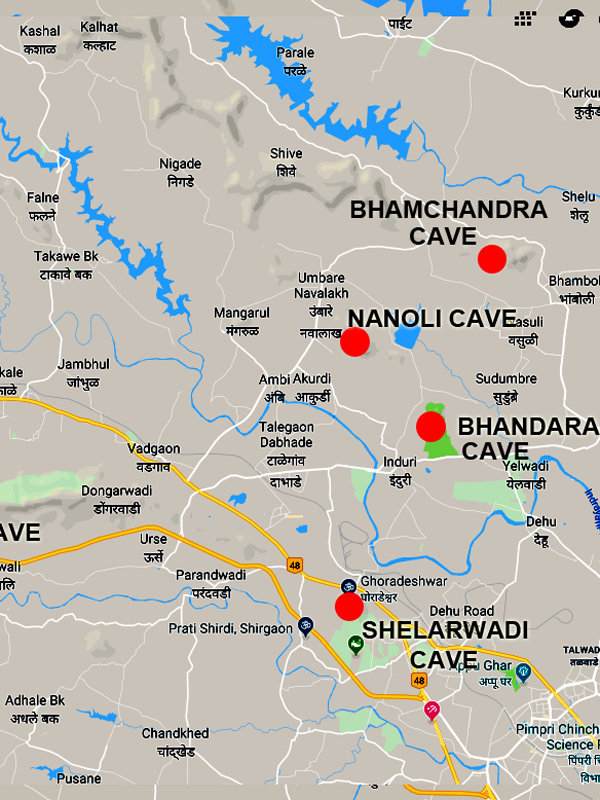 |
| |
| 2. Map of region, Induri/Bhandara Caves, Maval Tehsil, Pune district, Maharashtra, India |
| |
|
|
इंदुरी गाव महाराष्ट्र राज्यात, पुणे जिल्ह्याच्या मावळ तालुक्यात तळेगाव दाभाडे च्या पूर्वेला वसलेले आहे. जवळच नवलाख उंबरे हे महत्वाचे व्यापारी मार्गांवर वसलेले गाव आहे. इंदुरी गावाजवळ असलेल्या डोंगरावर भंडारा लेणी आहेत. या भागात नानोली, भामचंद्र आणि शेलारवाडी येथे नंतरच्या काळातली हीनयान बुद्ध लेणी आहेत. इंदुरीच्या पूर्वेला असलेल्या टेकडीत पश्चिममुखी लेणीसमूह आहे. या लेण्यांचा उल्लेख आणि अभ्यास आर. एल. भिडे यांनी १९५६-५७ साली प्रथम केला. त्यांनी येथे असलेल्या चार लेण्यांचा उल्लेख केला आहे. या लेणीसमूहात सहा लेणी आहेत. या ठिकाणी एक चैत्यगृह , तीन विहार आणि दोन अर्धवट ध्वस्त विहार आहेत. हि लेणी इसवीसनानंतर दुसऱ्या किंवा तिसऱ्या शतकात कोरली आहेत. येथे दिसणाऱ्या संरचनेवरून असे निदान केले जाते. संत तुकाराम या ठिकाणी येत असत. हि लेणी स्थानिक लोक "विठ्ठल रखुमाई लेणी" या नावाने ओळखतात. इंदुरी लेणी पुणे शहरापासून ३२ किलोमीटर आणि तळेगाव पासून अंदाजे ५ किलोमीटर अंतरावर आहेत.
|
|
Indoori is a village in Maval Taluka, north east of Talegaon Dabhade, in Pune district in the state of Maharashtra in India. The village is located near the base of the isolated hill on the Deccan plateau. Another important village Navlakh Umbre, which happned to be the junction of several trade routes is located near Induri hill. This Induri hill has unique Induri caves. There are several other caves in this region at Shelarwadi, Nanoli and Bhamchandra hills. Most of these caves are late Hinayana Buddhist caves. Induri caves which is a group of caves was reported by R. L. Bhide in the Bhandara hill, near Induri village in Maval Taluka in Pune district. He reported four caves at this location. Actually there are six caves if carefully seen.This cave group consists of a chaitya with stupa and three vihara caves and two incomplete or damaged vihara caves. These caves can be dated to the second-third century CE on the basis of the architectural features and are Hinayana caves. These caves were frequented by Sant Tukaram and locally are known as Vitthal Rakhumai Cave.
The caves are located at about 32 Km from Pune and about 5 Km from Talegaon Dabhade.
|
|
|
| |
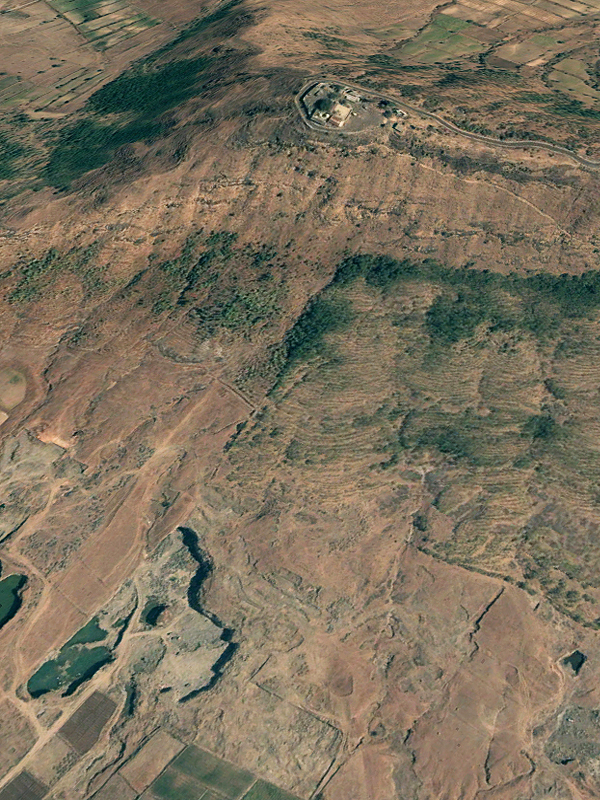 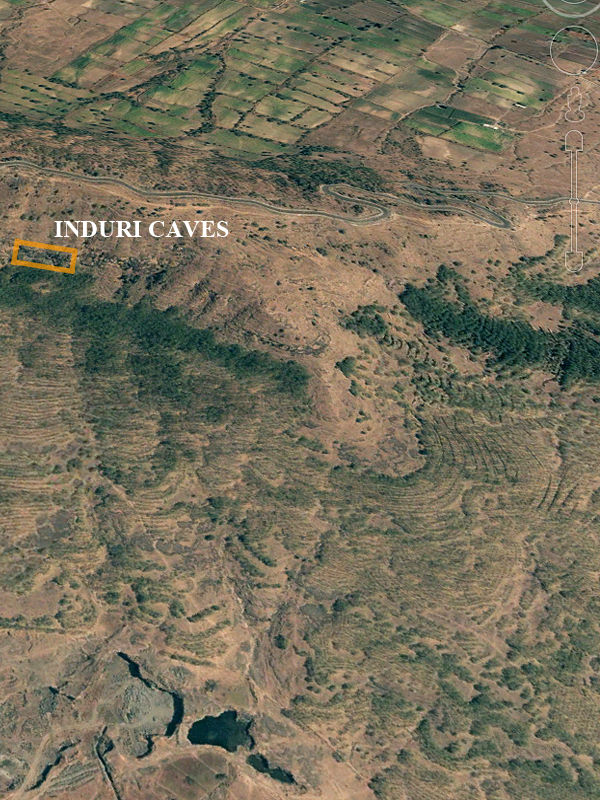 |
| |
| 3. Induri Caves location, Maval Tehsil, Pune district, Maharashtra, India |
| |
|
|
लेणे क्रमांक १ : इंदुरी गावाच्या पूर्वेला असलेल्या डोंगरावर कड्यात भंडारा किंवा इंदुरी लेणीसमूहातील लेणे क्रमांक १ कोरले आहे. हे लेणे पश्चिम मुखी आहे. सध्या तेथे विठ्ठल रखुमाई चे देऊळ आहे. लेण्यात आतल्या बाजूला एक देवारा आहे. यात विठ्ठल रखुमाई या देवतांच्या मूर्ती आहेत. लेण्यात एक मोठे दालन आहे. उत्तर आणि पूर्व बाजुंना असे दोन अंतर्गत विहार आहेत. विहारात बाक नाहीत . मुख्य दालनात दोन बाजूला बाक आहे. लेण्यात कोणतेही बौद्ध नक्षीकाम नाही. हा डोंगर प्राचीन व्यापारी मार्गाजवळ आहे. मुख्य दालनात पोहोचण्यासाठी कातळात पायऱ्या कोरल्या आहेत. दालनाची दर्शनी भिंत कोसळली असावी, सध्या हि भिंत विटा वापरून रचली आहे. दालनाबाहेर दरवाजाच्या दोन्ही बाजूस बाक आहेत. यातील दक्षिणेकडील बाक कपाटवजा आहे. असे बाकी शेलारवाडीच्या लेणीसमूहात दिसतात. कातळात बाहेरच्या बाजूला अजून दोन भग्न बाक आहेत. संत तुकाराम या लेण्यात येत असत असे समजतात. स्थानिक लोक या लेण्याला विठ्ठल रखुमाई लेणे असे संबोधतात. वारकरी संप्रदायाचे उपासक या लेण्यात वास्तव्याला असतात.
लेणे क्रमांक २ : इंदुरी गावाच्या दक्षिणेला कातळात एक खळगा आहे. हा खळगा मानवनिर्मित आहे. यात एखादा माणूस बसू शकतो.
लेणे क्रमांक ३ : हे लेणे पश्चिम मुखी आहे. लेणे क्रमांक २ च्या दक्षिणेला उंचावर एक चौकोनी चैत्यगृह आहे. तीन बाजूंना कातळ कोरून भिंत तयार केलेली आहे. या चैत्याला दगडात कोरलेले छत नाही. दर्शनी भिंत नाही. छत आणि दर्शनी भिंत लाकडी असावी, असे भिंतीतील आणि जमिनीवरच्या खाचा पाहून जाणवते. या चौकोनी चैत्यगृहात मध्यभागी एक कोरलेला स्तूप आहे. स्तुपावर वेदिका नक्षीकाम आहे. हर्मिका आणि यष्टी मात्र नाही. स्तूपाच्या वरच्या भागाची धूप झाली आहे. कातळात उंचावर असलेया या चैत्यगृहापर्यंत पोहोचण्यासाठी पूर्वी कदाचित लाकडी जिना असावा.
लेणे क्रमांक ४: हे लेणे पश्चिम मुखी आहे. लेणे क्रमांक 3 च्या दक्षिणेला अजून एक लहान विहार आहे. विहाराची रचना साधी आहे.. या विहारात बाक आहे. येथे कोणतेही नक्षीकाम नाही. लेण्यांच्या दर्शनी भागात दरवाजाच्या बाहेर एका बाजूला एक कपाटवजा बाक आहे.
लेणे क्रमांक ५ : लेणे क्रमांक १ च्या वरच्या बाजूला चढून गेल्यास दोन अर्धवट विहार आढळतात. यातील उत्तरेकडचा विहार म्हणजे लेणे क्रमांक ५ होय. या विहारात एक बाक आहे. मागच्या बाजूला कातळात कोरलेली भिंत आहे. दर्शनी बाजूला भिंत नाही किंवा नव्हती. छत कोसळले असावे.
लेणे क्रमांक ६ : लेणे क्रमांक १ च्या वरच्या बाजूला चढून गेल्यास दोन अर्धवट विहार आढळतात. यातील दक्षिणेकडचा विहार म्हणजे लेणे क्रमांक ६ होय. या विहारात एक बाक आहे. मागच्या बाजूला कातळात कोरलेली भिंत आहे. दर्शनी बाजूला भिंत नाही किंवा नव्हती. दगडी छत आतल्या बाजूला असले तरी दर्शनी भागात ते कोसळले असावे. किंवा मुळात: नसावे. जमिनीवर कातळात दरवाजा लावण्यासाठी केलेल्या खाचा आढळतात. बाहेर एक बांधलेले दालन असावे. लेणे क्रमांक ५ आणि ६ च्या बाहेर पुढील बाजूस अंदाजे एक मीटर अंतरावर ६ मोठ्या चौकोनी खाचा कातळात आढळतात. यावरून येथे बांधीव पडवी असे स्पष्ट होते.
पाण्याच्या टाकी क्रमांक १: लेणे क्रमांक १ च्या बाहेर उत्तरेला जवळच १ पाण्याचे टाके आहेत. सध्या या टाक्याच्या मुखावर काँक्रीट वापरून डागडुजी केली आहे.
पाण्याच्या टाकी क्रमांक २: लेणे क्रमांक २ च्या समोर १ पाण्याचे टाके आहेत. सध्या या टाक्याच्या मुखावर काँक्रीट वापरून डागडुजी केली आहे.
|
|
Cave#1: East of Induri village across the forest, midway up the hill, the Induri cave group os located. The cave#1 is located on the north side of the cave group. Now there is a shrine of Hindu deities Vitthal Rakhumai in this cave. The cave is simple hall with two internal cells. There are no traces of Stupa or any other Buddhist symbol in the cave. There are no benches in the internal cells. But there is a bench in the main hall on two sides. The cave is located close to the ancient trade route. The cave is void of any ancient ornamentation. Outside the cave in verandah there are two benchs on either side of the door.
The front wall of the hall seems to have been collapsed. The wall is now in brick and mortar. The bench on south side is a recess bench of the type typically seen at Shelarwadi caves. Further in front of the cave there are steps carved in the rock to reach this cave, with again couple of benches on either side. It is said that Sant Tukaram used to visit the caves often and the cave is locally known as Vitthal Rakhumai Cave. The monks from Varkari Sampradaay stay in this cave who look after the shrine and mainly study the scripts of Varkari Sampradaay sants such as sant Tukaram, Sant Dnyaneshwar and other sants.
Cave#2: Further south of the Cave#1, there is a small incomplete groove in the rock as if the work for cave was started.
Cave#3: Further south of the Cave#1 and#2 there is a small open elevated levelled rock. This open cell does not have rock cut roof. The three side walls have rectangular slots. There is no front rock wall. There is a large stupa at the center of this rectangular open chaitya. It seems like there was a wooden roof and wooden front wall. This can be gueseed based on several sockets on the three walls around Stupa and in the floor in front. There must have been a wooden staircase to reach this elevated chaityagriha. The stupa is about 3 meter in diameter. There is a rail pattern ornamentation on the stupa. The top of the stupa has been partially damaged due to exposure to open atmosphere and the Hermika and Yashti is absent, today. There are few sockets on the back side of Stupa just below the rail pattern. It seems that there was some wooden work done here on Stupa to cover up the deformity in the rock. There are also 6 small sockets on the floor around Stupa. It means there was some wooden structure or panels all around Stupa.
Cave#4: Further south of the Cave#3, again at the elevated level, there is a small cave which there is a single cell with door. This cave does not have any ornamentation. Outside the cave in verandah there is a recess in the wall on one side.
Cave#5: Above the Cave#1, at the elevated level, there is a small cave#5, which is a single cell without roof or front wall. This cave does not have any ornamentation. The cave has a bench in it.
Cave#6: Above the Cave#1, at the elevated level, there is a small cave#6 adjascent to Cave#5, which is a single cell with partially collapsed roof and no front wall. This cave does not have any ornamentation. The cave has a bench in it. The cave has pole sockets in the floor for the door. Infront of the cave #5 and #6 at the distance of about a meter, there is a series of sockets in the floor, which indicate that there was a verandah made out of wooden/brick structure in front of Cave#5 and Cave#6.
Cistern#1: In front of the cave#1, there is a rock cut underground water cistern which has been modified recently by making a concrete top.
Cistern#2: In front of the cave#2, there is a rock cut underground water cistern which has been modified recently by making a concrete top.
|
|
|
| |
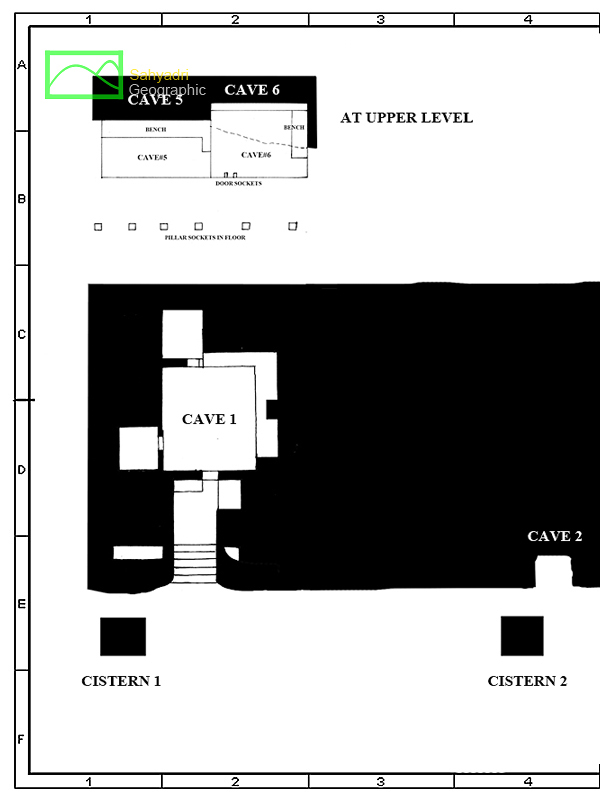 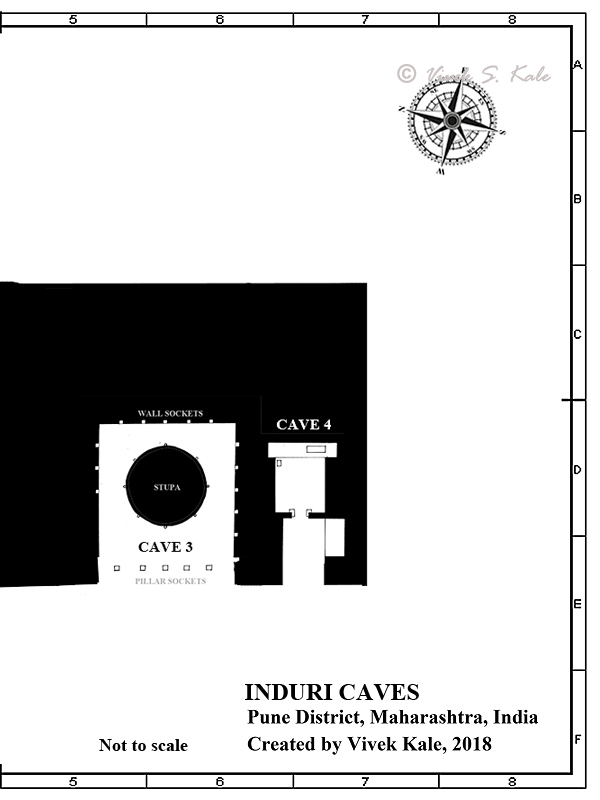 |
| |
| 4. Layout - Induri Caves, Maval Tehsil, Pune district, Maharashtra, India |
| |
|
|
| |
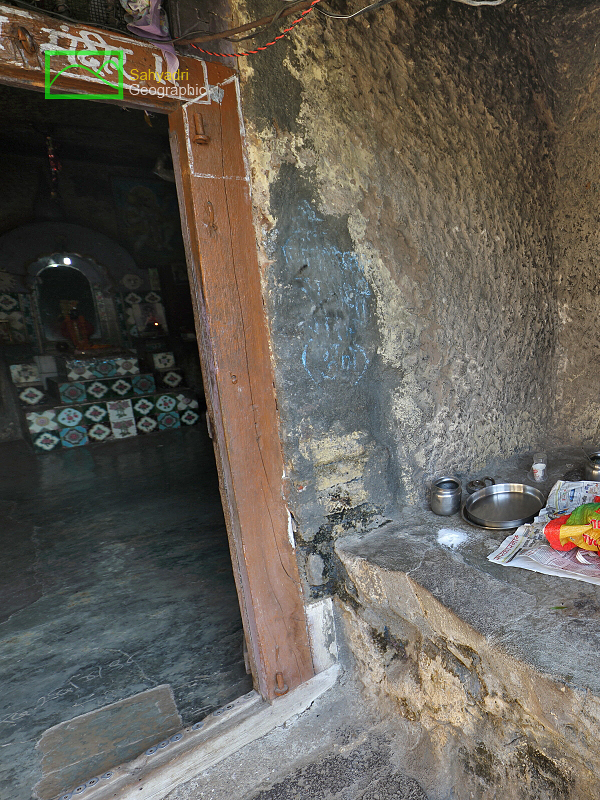  |
| |
| 5. Cave#1, Induri Caves, Maval Tehsil, Pune district, Maharashtra, India |
| |
|
|
| |
  |
| |
| 6. Cave#1 bench, Induri Caves, Maval Tehsil, Pune district, Maharashtra, India
|
| |
|
|
| |
 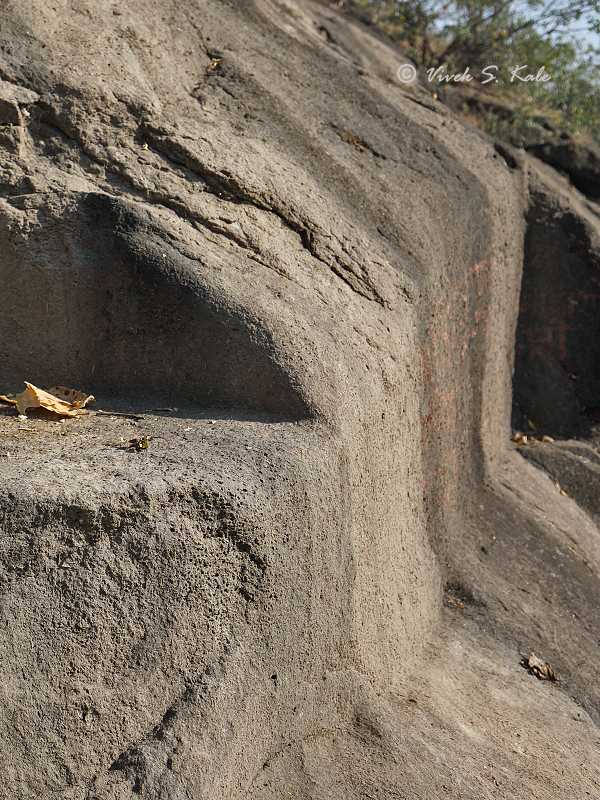 |
| |
| 7. Cave#1 bench, Induri Caves, Maval Tehsil, Pune district, Maharashtra, India
|
| |
|
|
| |
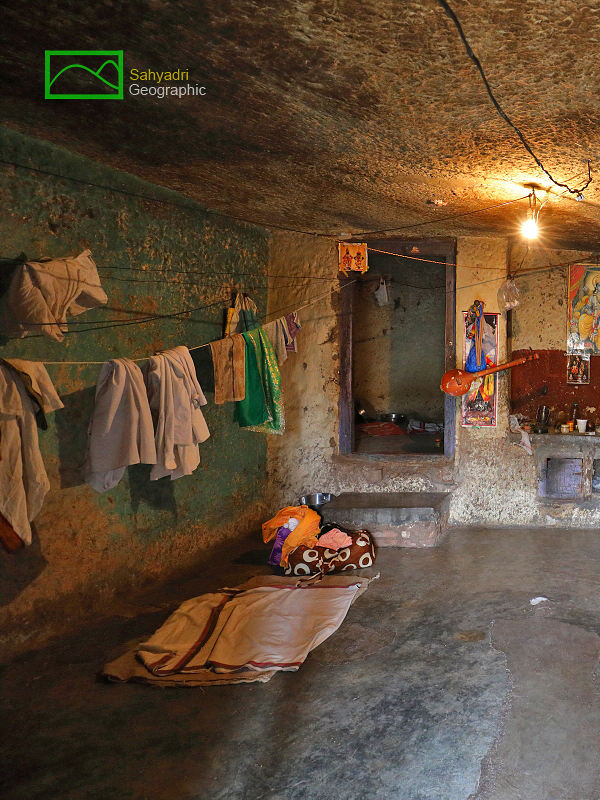 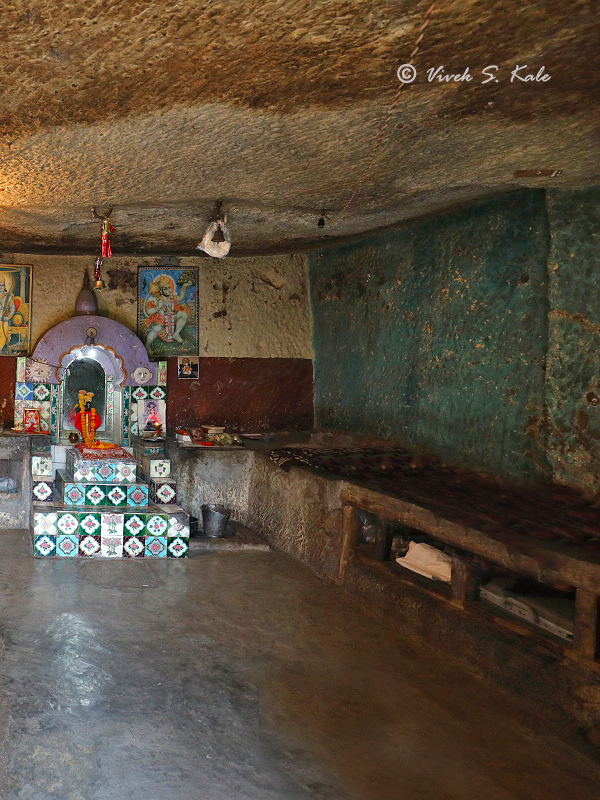 |
| |
| 8. Cave#1,Induri caves, Maval Tehsil, Pune district, Maharashtra, India
|
| |
|
|
येळघोळ च्या लांब बाकाकडे पहाता येथे खूप उपासक जमा होत असावेत. अभ्यासासाठी किंवा एखाद्या धार्मिक विधी साठी ते जमा होत असावेत. येथे अंदाजे २०-२५ उपासक बाकावर बसू शकतील एवढी या बाकाही रुंदी आहे.
|
|
The long bench at Yelghol suggests that many people used to gather here either for some ritual or for some function.
|
|
|
| |
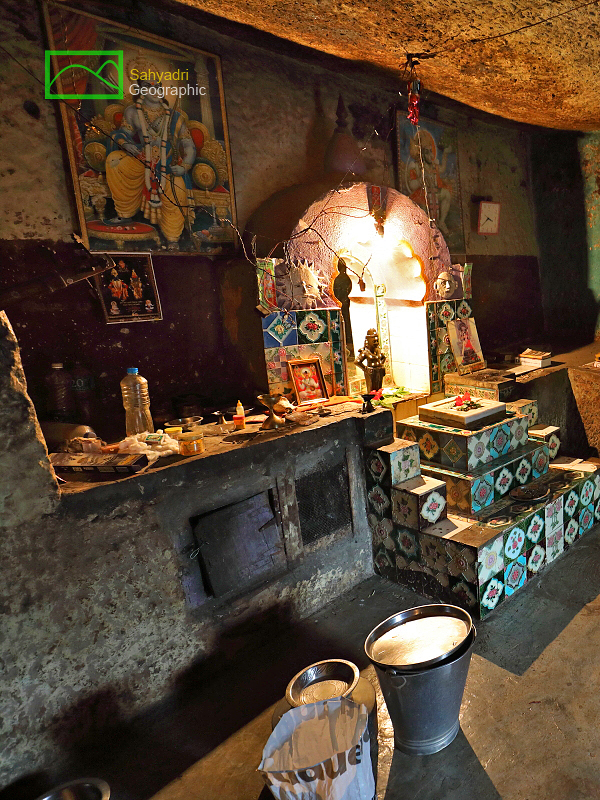  |
| |
| 9. Cave#1, Induri Caves, Maval Tehsil, Pune district, Maharashtra, India |
| |
|
|
| |
 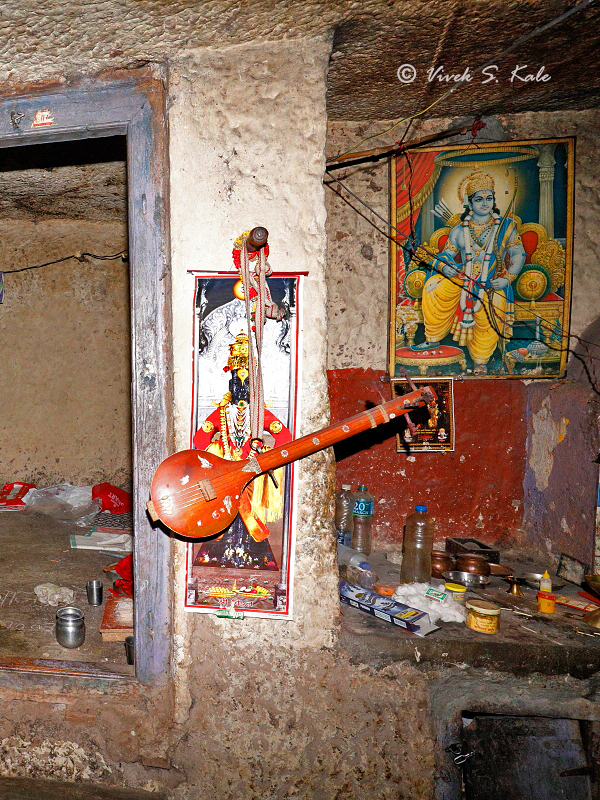 |
| |
| 10. Cave#1, Induri Caves, Maval Tehsil, Pune district, Maharashtra, India |
| |
|
|
| |
 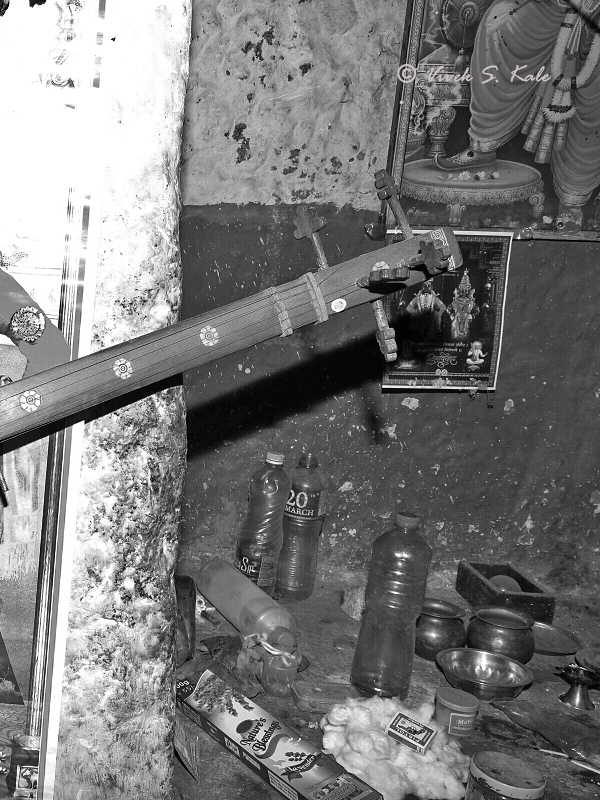 |
| |
| 11 Cave#1, Induri Caves, Maval Tehsil, Pune district, Maharashtra, India |
| |
|
|
| |
 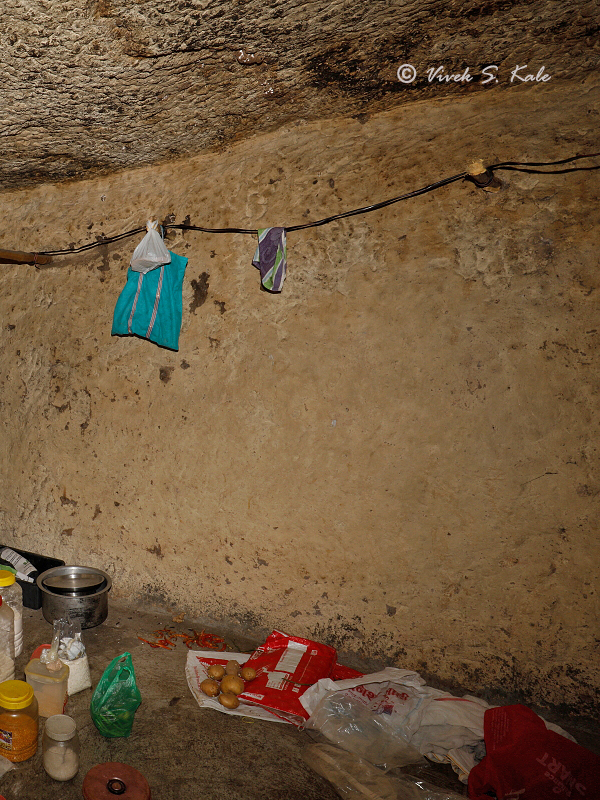 |
| |
| 12. Cave#1, , Induri Caves, Maval Tehsil, Pune district, Maharashtra, India |
| |
|
|
| |
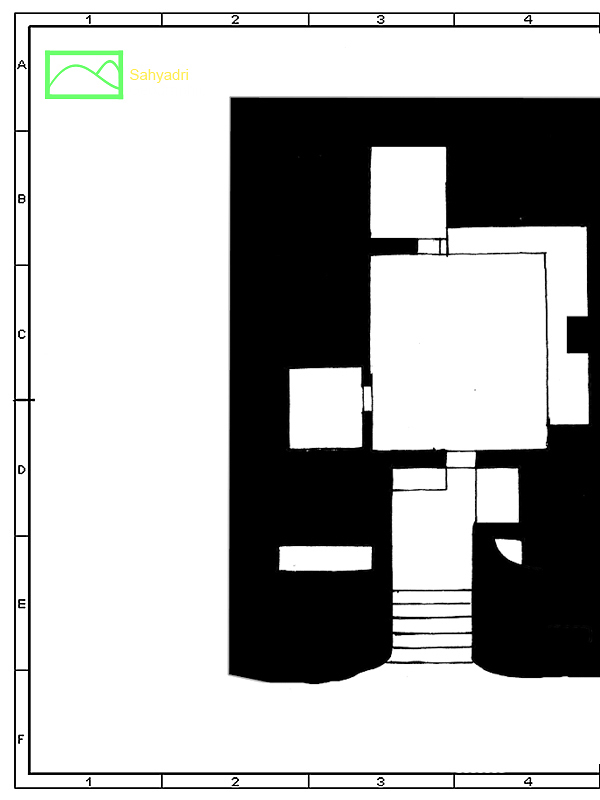  |
| |
| 13. Layout of Cave#1, Induri Caves, Maval Tehsil, Pune district, Maharashtra, India |
| |
|
|
| |
  |
| |
| 14. Cistern 1, Induri Caves, Maval Tehsil, Pune district, Maharashtra, India |
| |
|
|
| |
 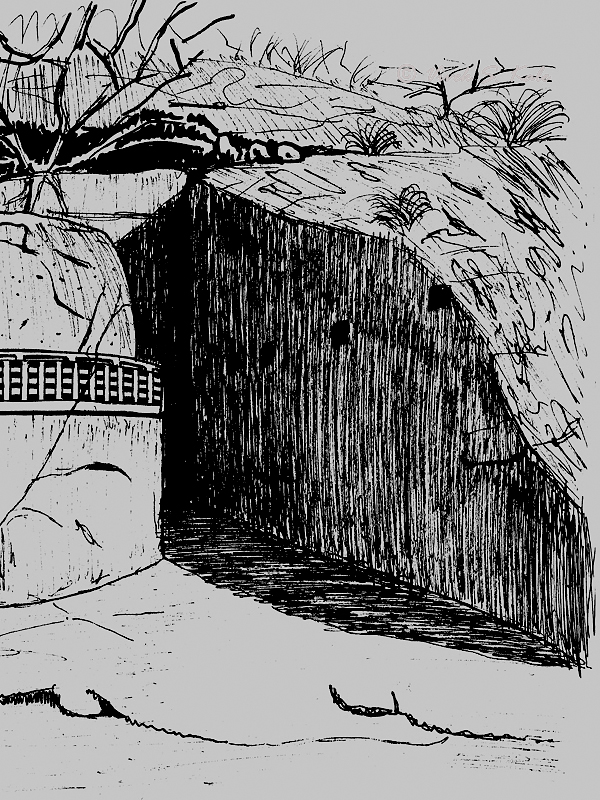 |
| |
| 15. Cave#3, Induri Caves, Maval Tehsil, Pune district, Maharashtra, India |
| |
|
|
| |
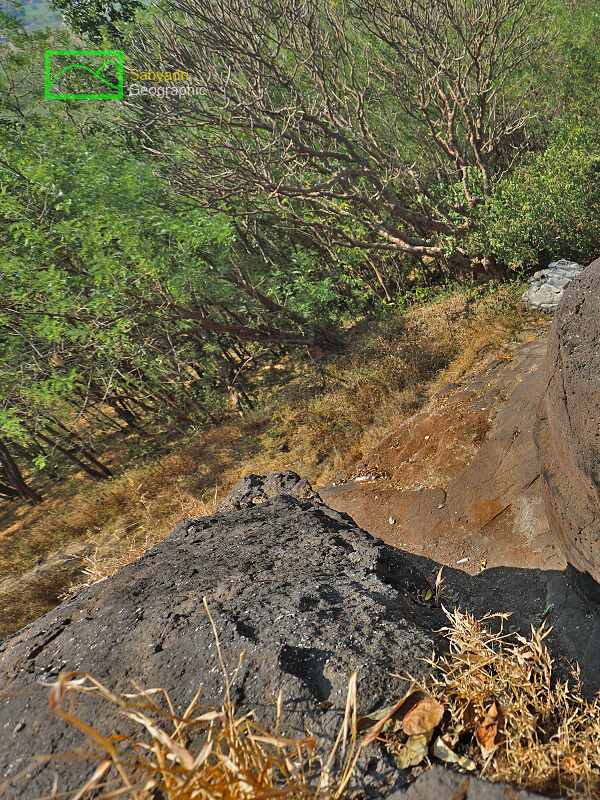 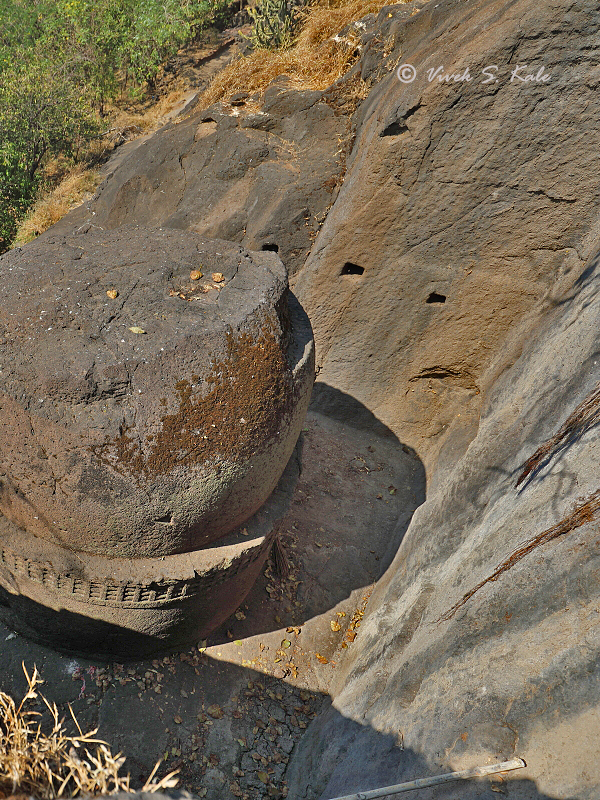 |
| |
| 16. Cave#3, Induri Caves, Maval Tehsil, Pune district, Maharashtra, India |
| |
|
|
| |
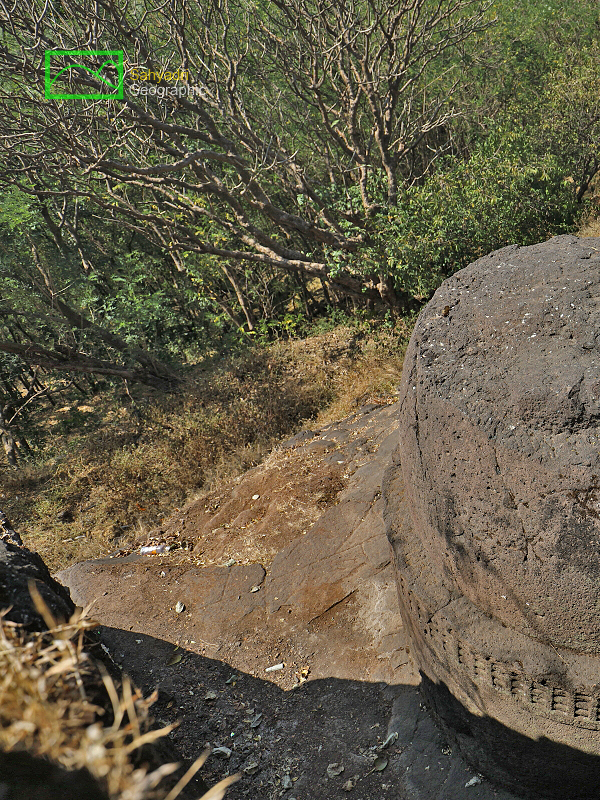  |
| |
| 17. Cave # 3, Induri Caves, Maval Tehsil, Pune district, Maharashtra, India |
| |
|
|
| |
 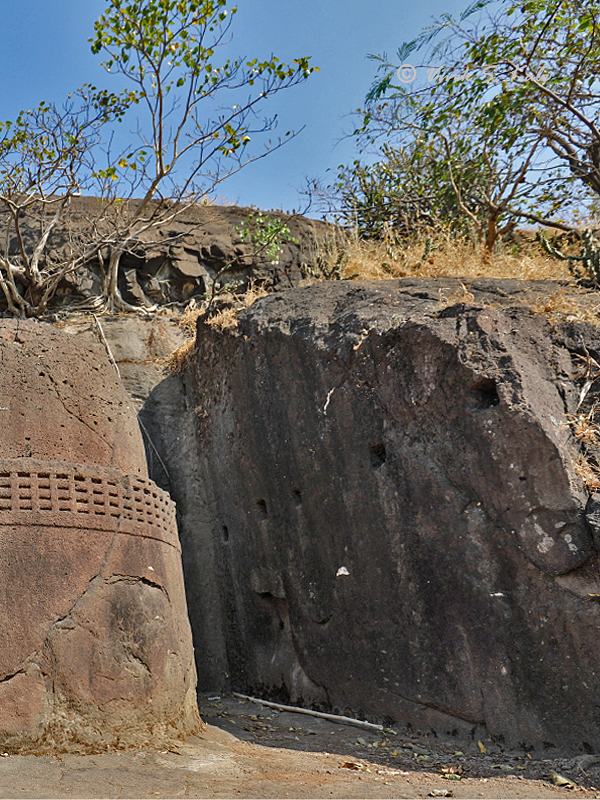 |
| |
| 18. Cave # 3, Induri Caves, Maval Tehsil, Pune district, Maharashtra, India |
| |
|
|
| |
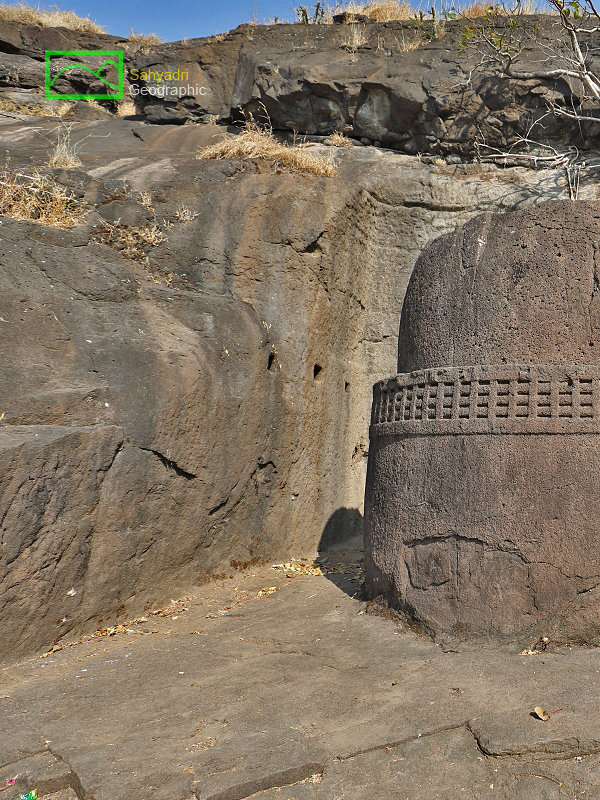  |
| |
| 19. Cave # 3, Induri Caves, Maval Tehsil, Pune district, Maharashtra, India |
| |
|
|
| |
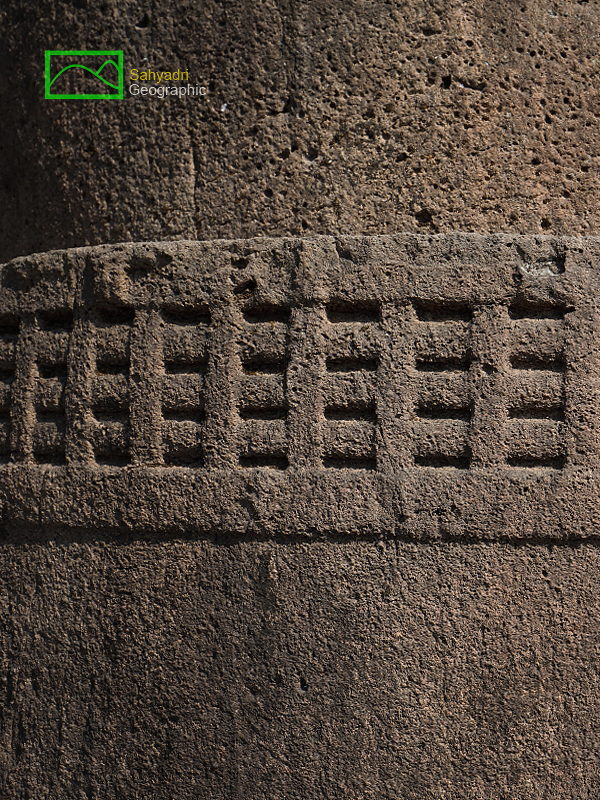 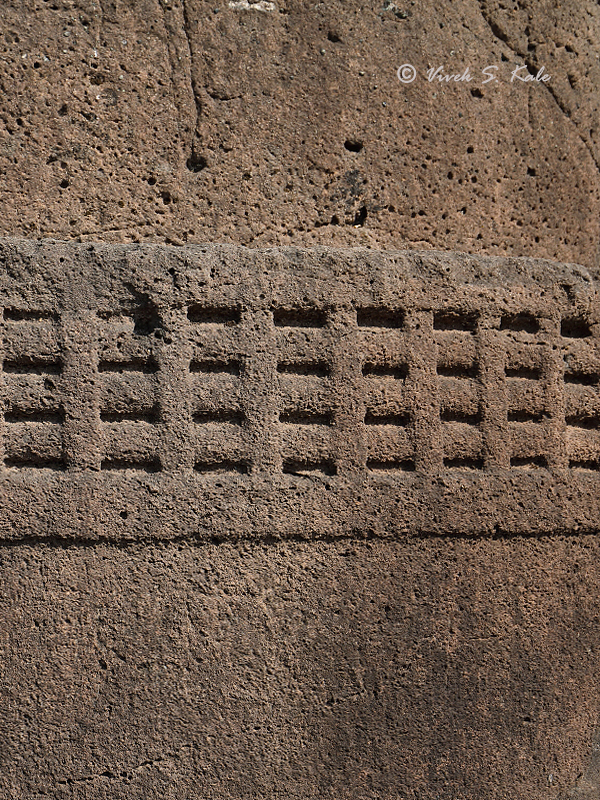 |
| |
| 20. Cave # 3, Induri Caves, Maval Tehsil, Pune district, Maharashtra, India |
| |
|
|
| |
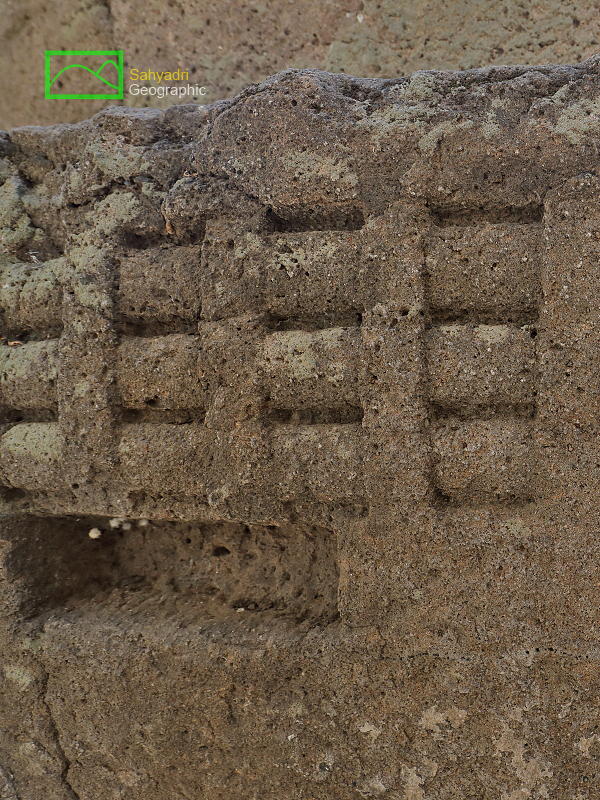 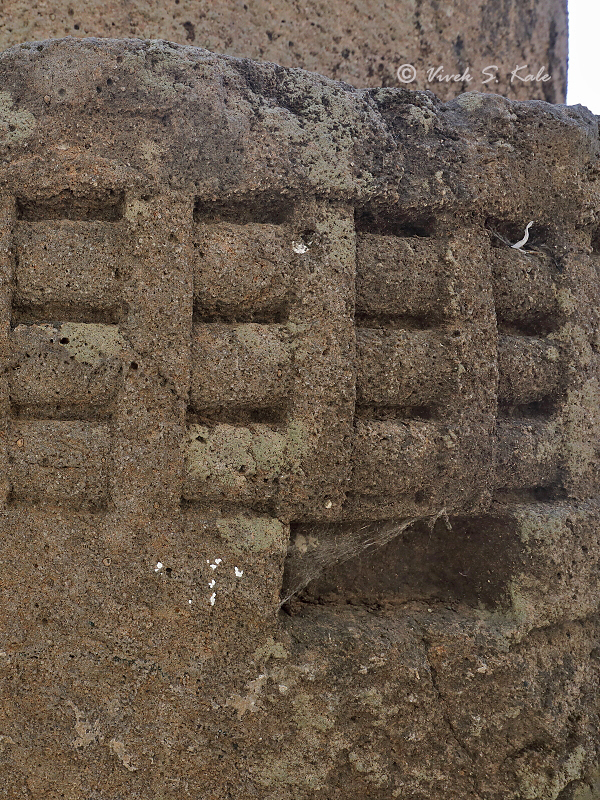 |
| |
| 21. Cave # 3, Induri Caves, Maval Tehsil, Pune district, Maharashtra, India |
| |
|
|
| |
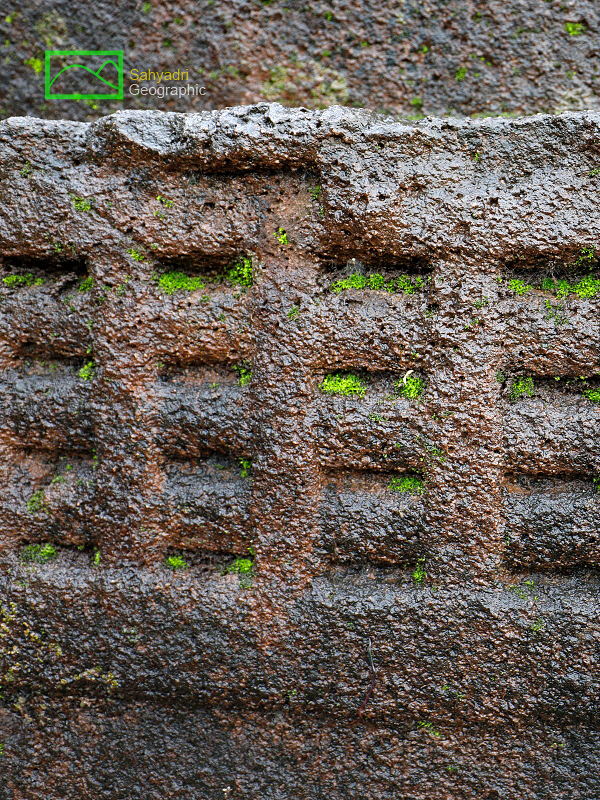  |
| |
| 22. Cave # 3, Induri Caves, Maval Tehsil, Pune district, Maharashtra, India |
| |
|
|
| |
  |
| |
| 23. Cave # 3, Induri Caves, Maval Tehsil, Pune district, Maharashtra, India |
| |
|
|
| |
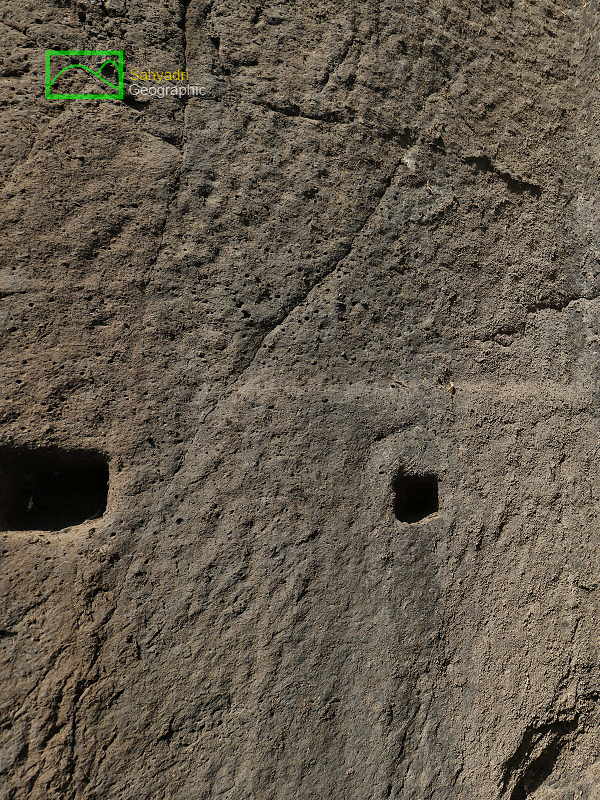 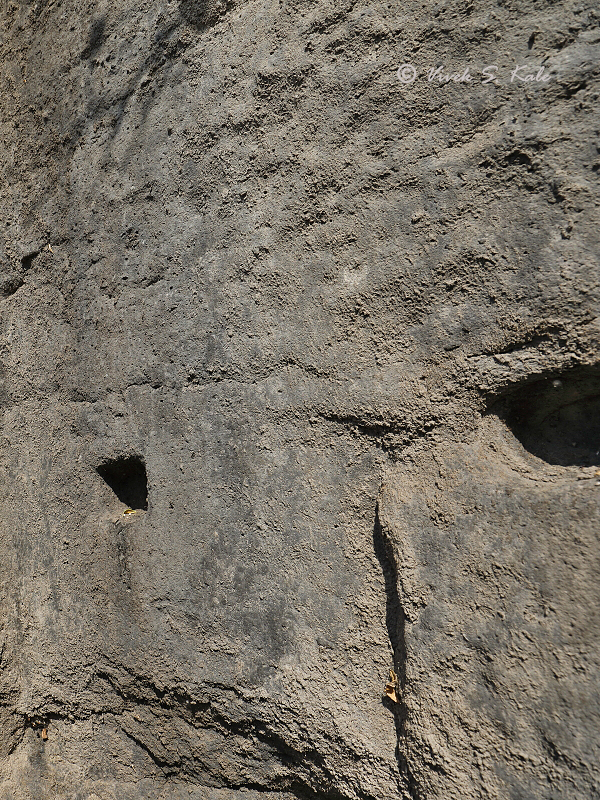 |
| |
| 24. Cave # 3, Induri Caves, Maval Tehsil, Pune district, Maharashtra, India |
| |
|
|
| |
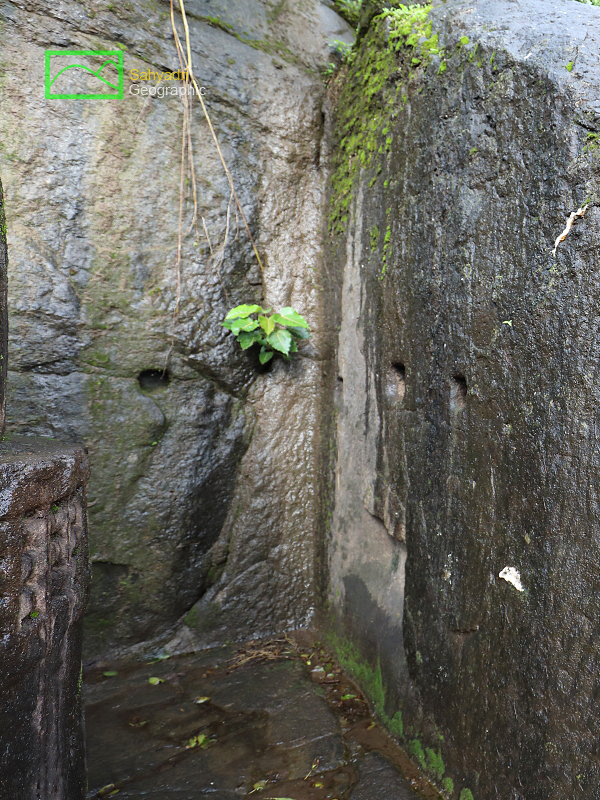 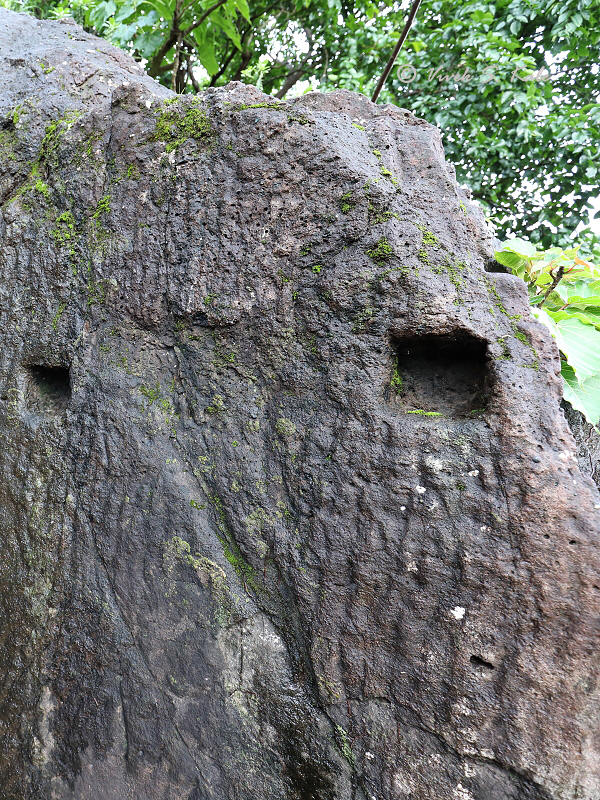 |
| |
| 25. Cave # 3, Induri Caves, Maval Tehsil, Pune district, Maharashtra, India |
| |
|
|
| |
 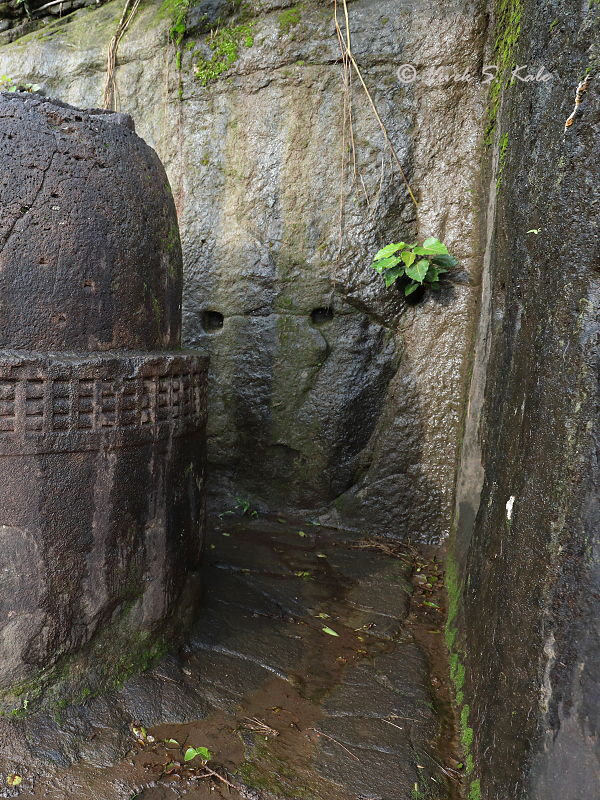 |
| |
| 26. Cave # 3, Induri Caves, Maval Tehsil, Pune district, Maharashtra, India |
| |
|
|
| |
  |
| |
| 27. Cave # 3, Induri Caves, Maval Tehsil, Pune district, Maharashtra, India |
| |
|
|
| |
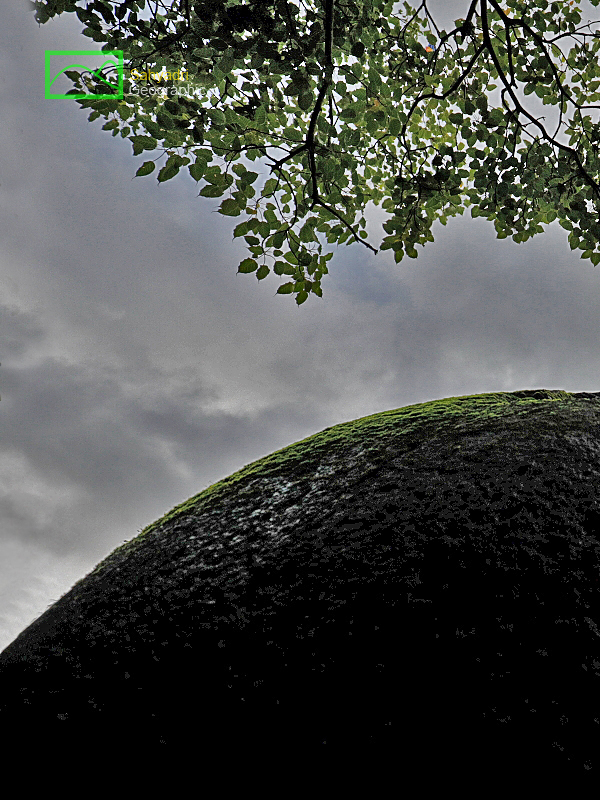 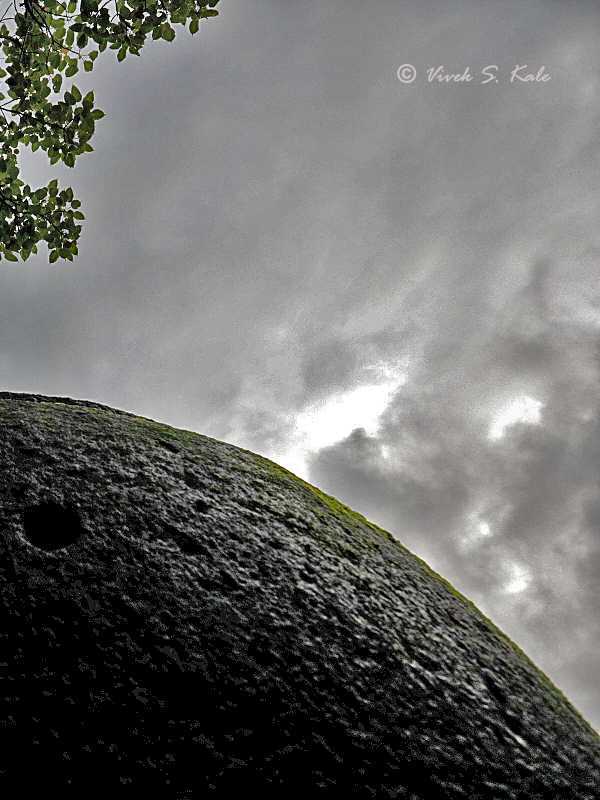 |
| |
| 28. Cave # 3, Induri Caves, Maval Tehsil, Pune district, Maharashtra, India |
| |
|
|
| |
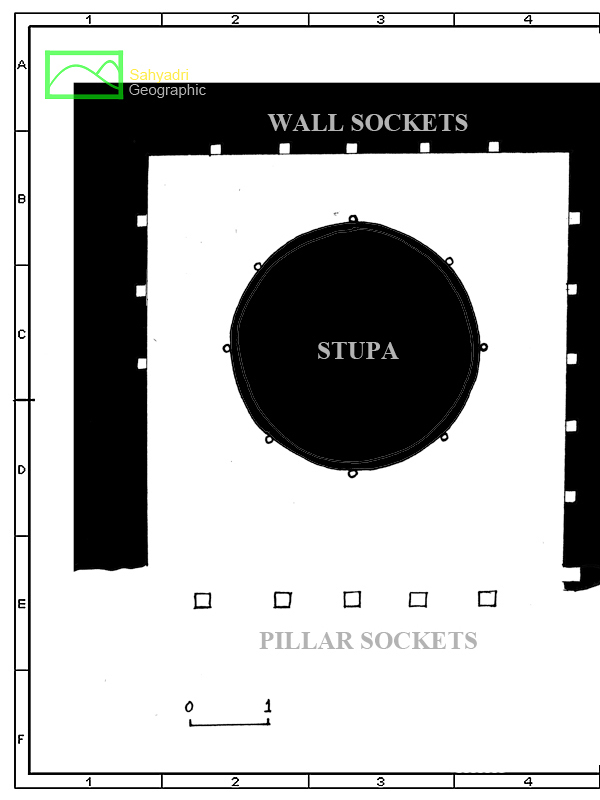 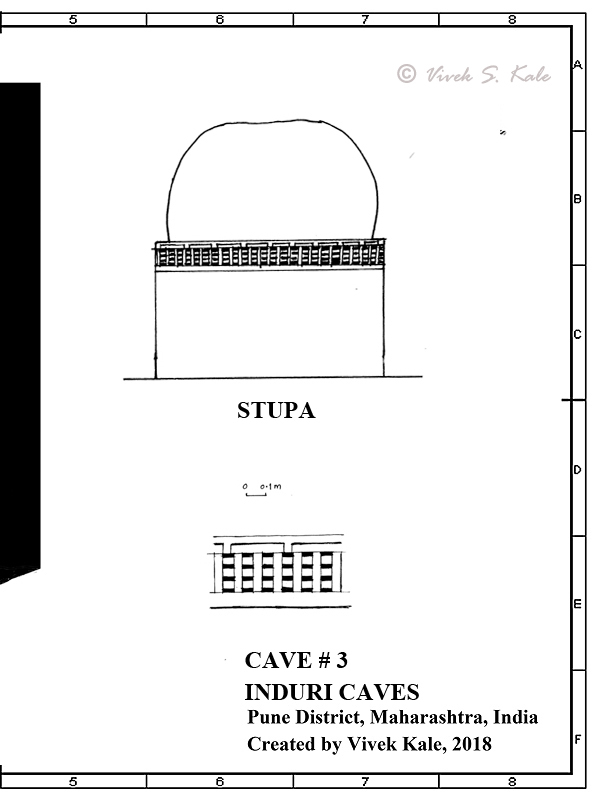 |
| |
| 29. Layout of Stupa/chaitya, Cave #3, Induri Caves, Maval Tehsil, Pune district, Maharashtra, India |
| |
|
|
| |
  |
| |
| 30. Cave#3, Induri Caves, Maval Tehsil, Pune district, Maharashtra, India |
| |
|
|
| |
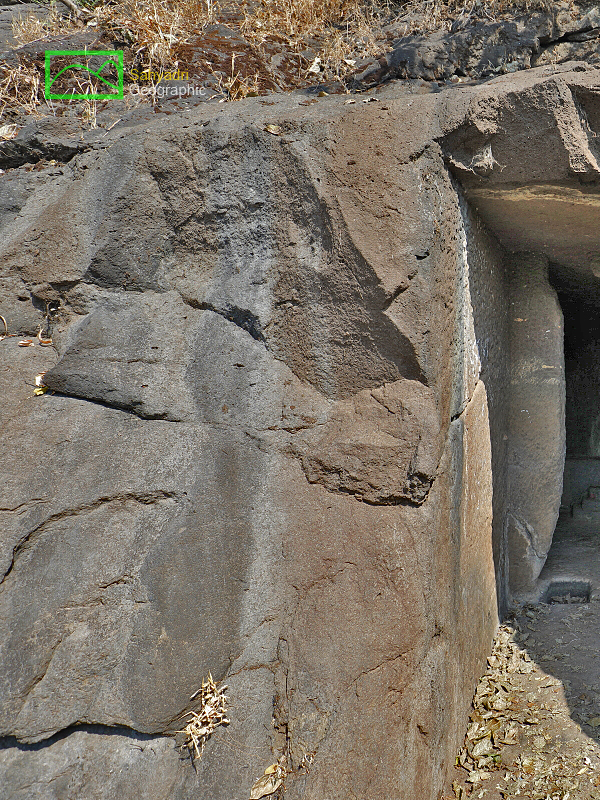  |
| |
| 31. Cave#4, Induri Caves, Maval Tehsil, Pune district, Maharashtra, India |
| |
|
|
| |
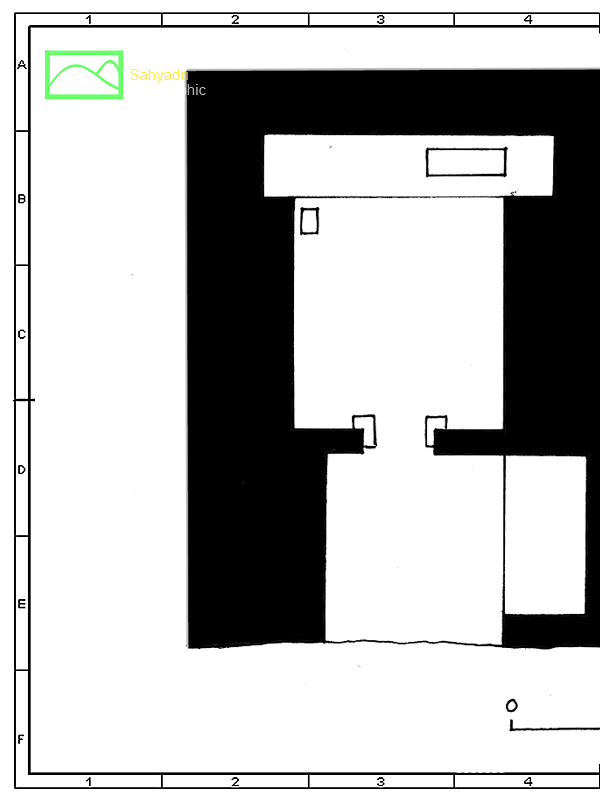  |
| |
| 32. Layout of Cave#4, Induri Caves, Maval Tehsil, Pune district, Maharashtra, India |
| |
|
|
| |
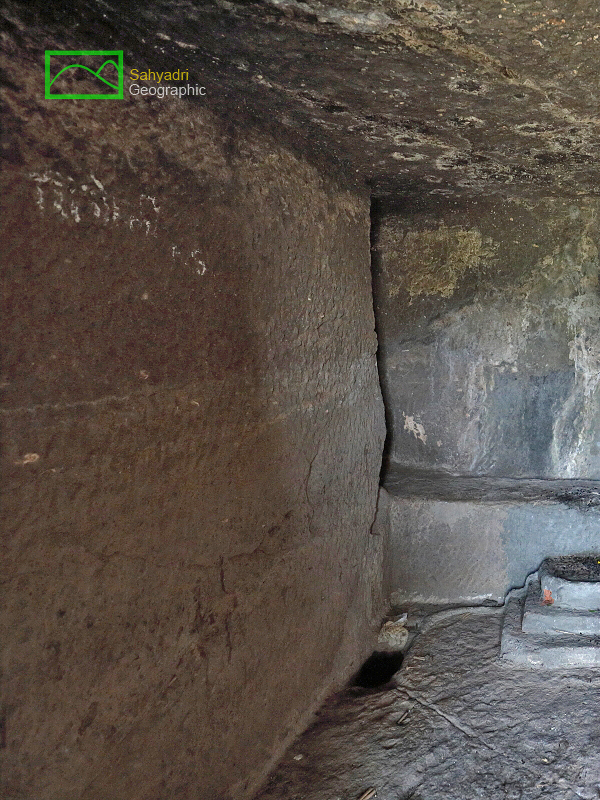 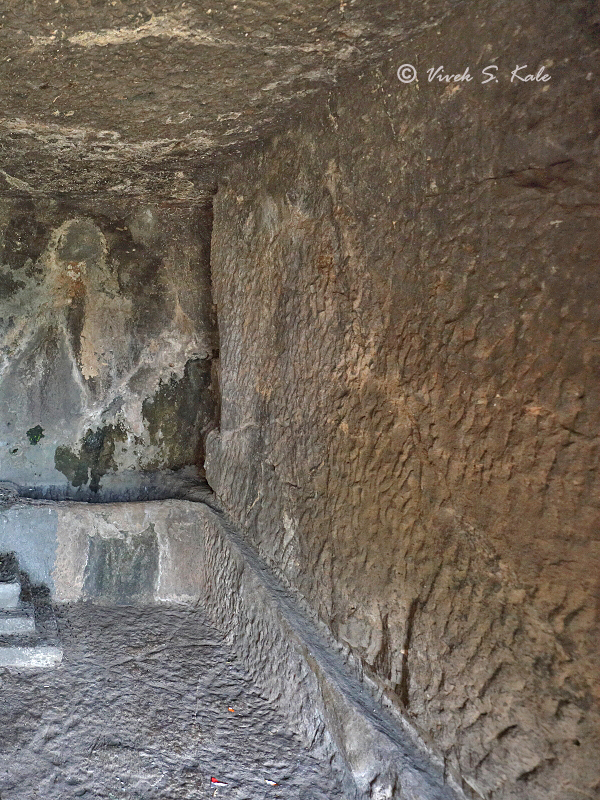 |
| |
| 33. Cave#4, Induri Caves, Maval Tehsil, Pune district, Maharashtra, India |
| |
|
|
| |
 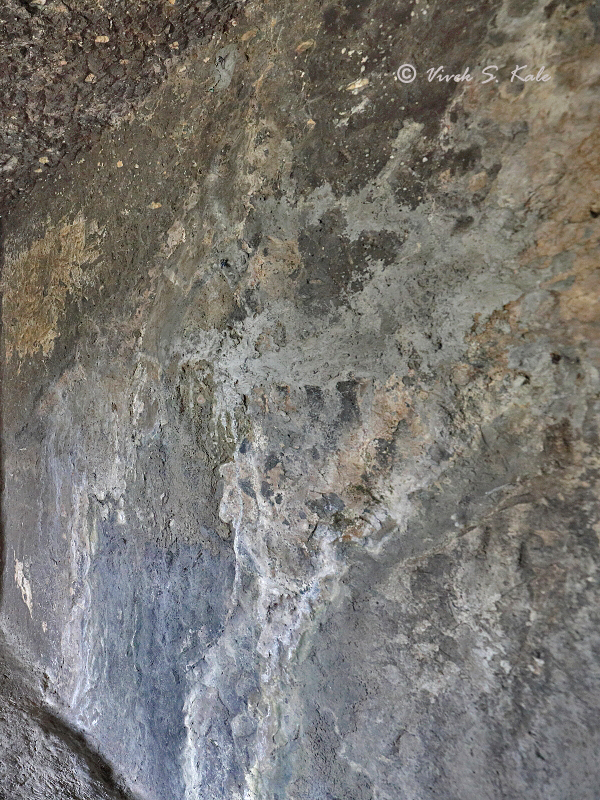 |
| |
| 34. Cave#4, Induri Caves, Maval Tehsil, Pune district, Maharashtra, India |
| |
|
|
| |
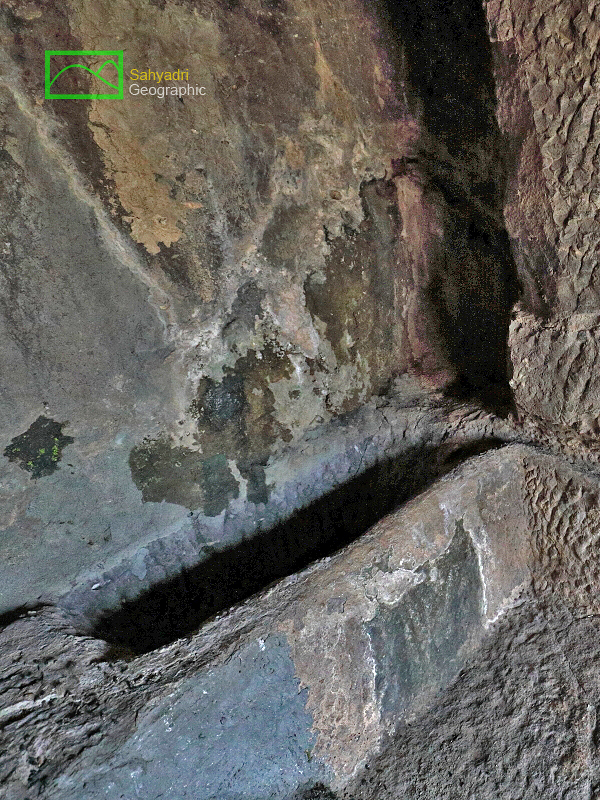  |
| |
| 35. Cave#4, Induri Caves, Maval Tehsil, Pune district, Maharashtra, India |
| |
|
|
| |
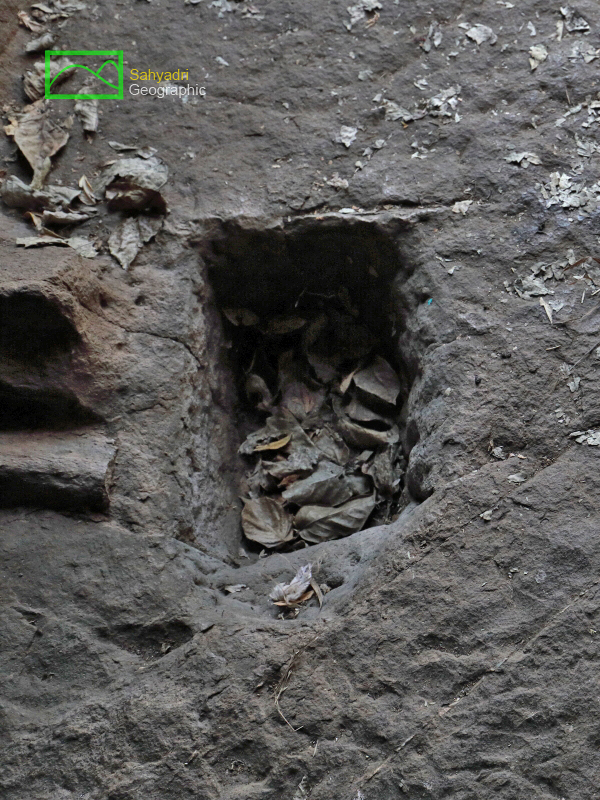 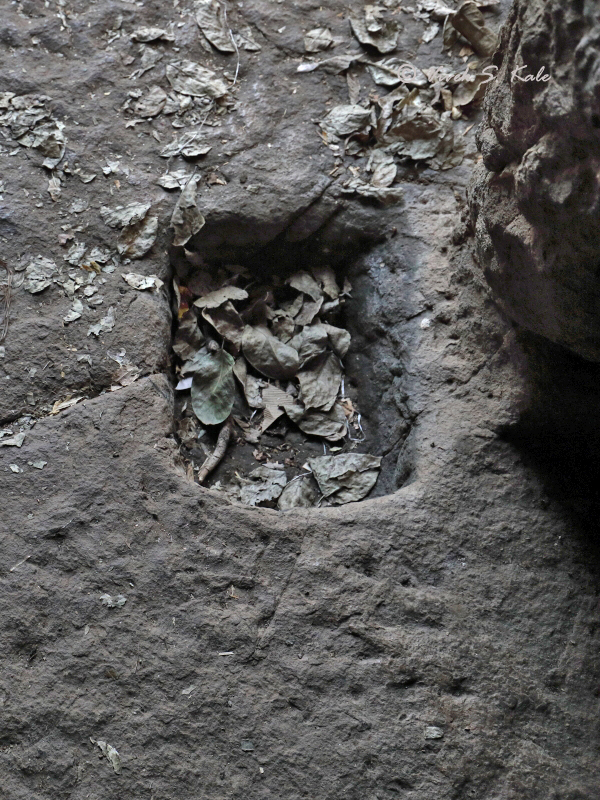 |
| |
| 36. Cave#4, Induri Caves, Maval Tehsil, Pune district, Maharashtra, India |
| |
|
|
| |
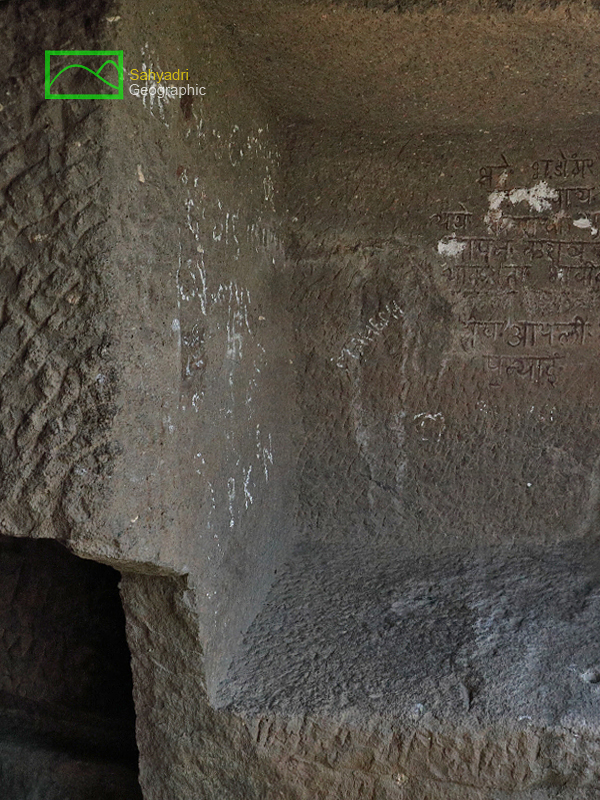 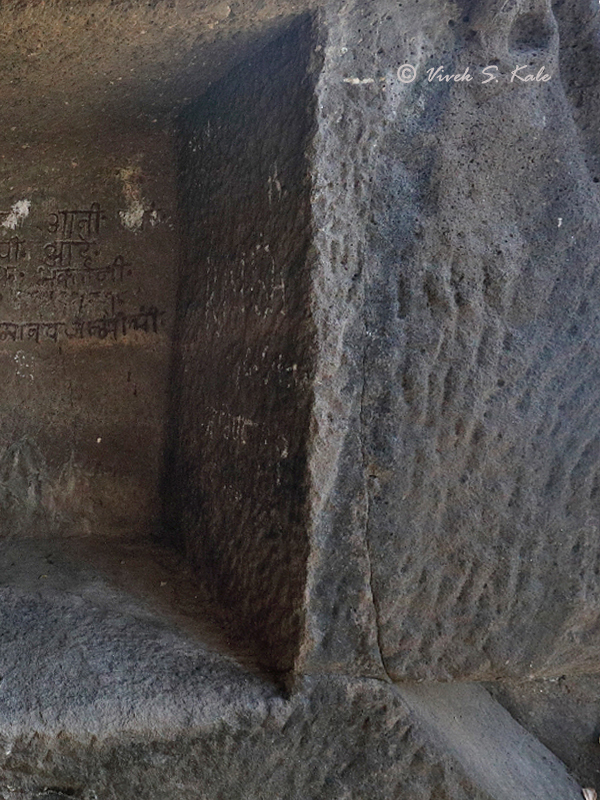 |
| |
| 37. Cave#4, Induri Caves, Maval Tehsil, Pune district, Maharashtra, India |
| |
|
|
| |
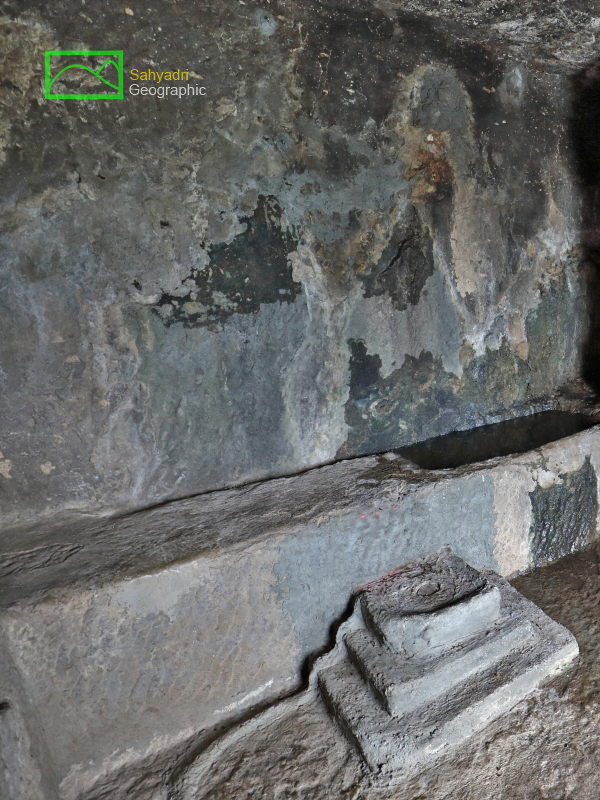  |
| |
| 38. Cave#4, Induri Caves, Maval Tehsil, Pune district, Maharashtra, India |
| |
|
|
| |
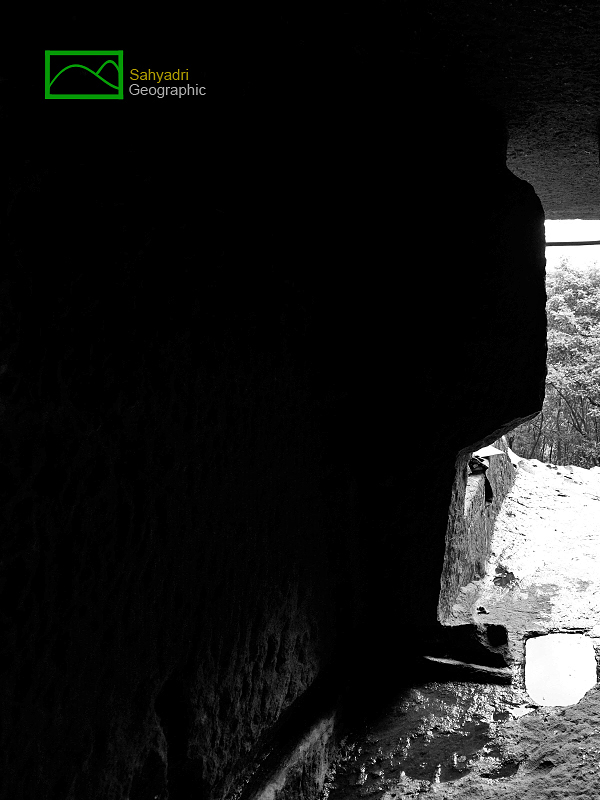 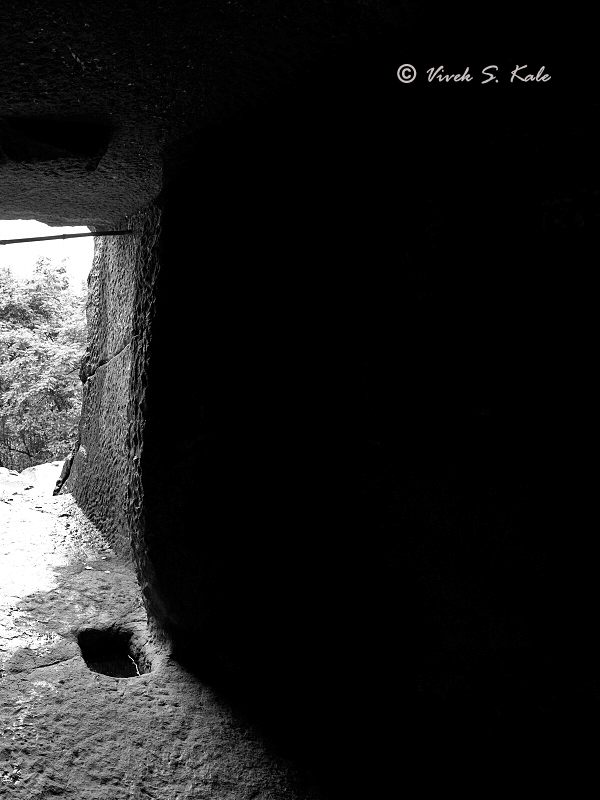 |
| |
| 39. Cave#4, Induri Caves, Maval Tehsil, Pune district, Maharashtra, India |
| |
|
|
| |
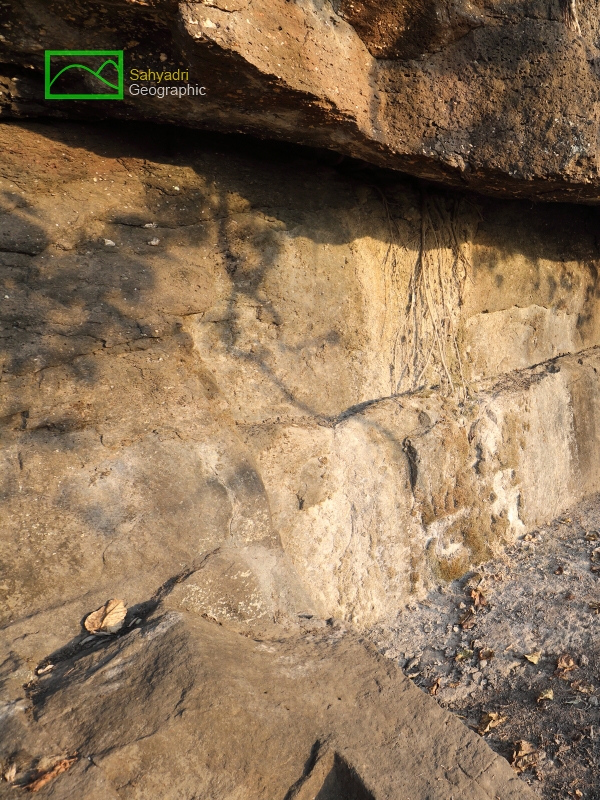 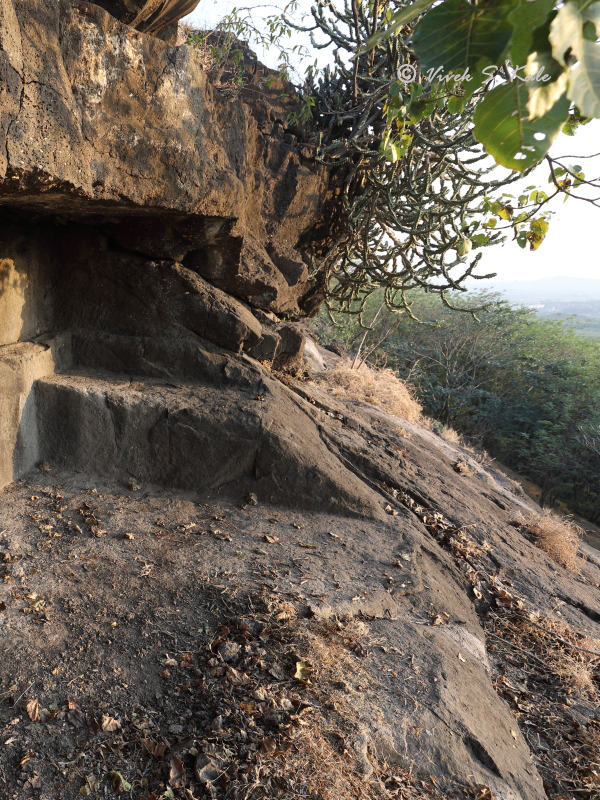 |
| |
| 40. Cave#6, Induri Caves, Maval Tehsil, Pune district, Maharashtra, India |
| |
|
|
| |
  |
| |
| 41. Cave#6, Induri Caves, Maval Tehsil, Pune district, Maharashtra, India |
| |
|
|
| |
 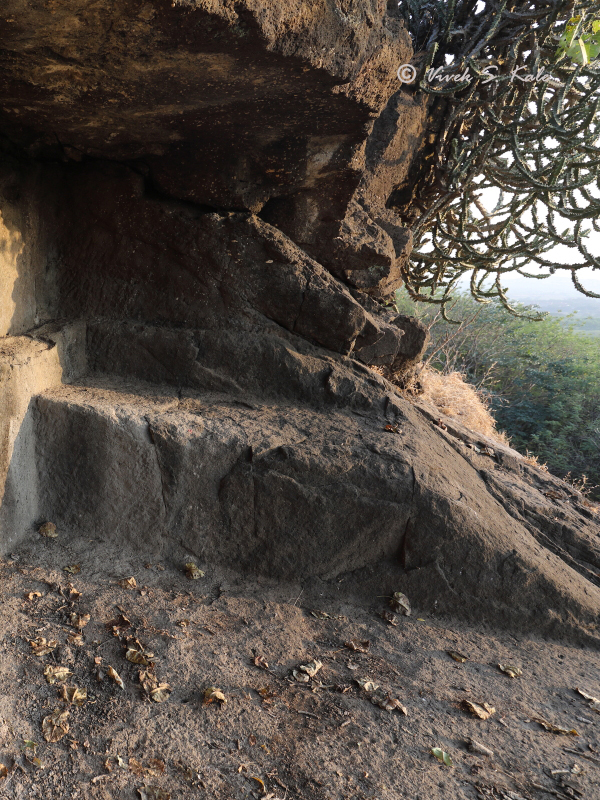 |
| |
| 42. Cave#6, Induri Caves, Maval Tehsil, Pune district, Maharashtra, India |
| |
|
|
| |
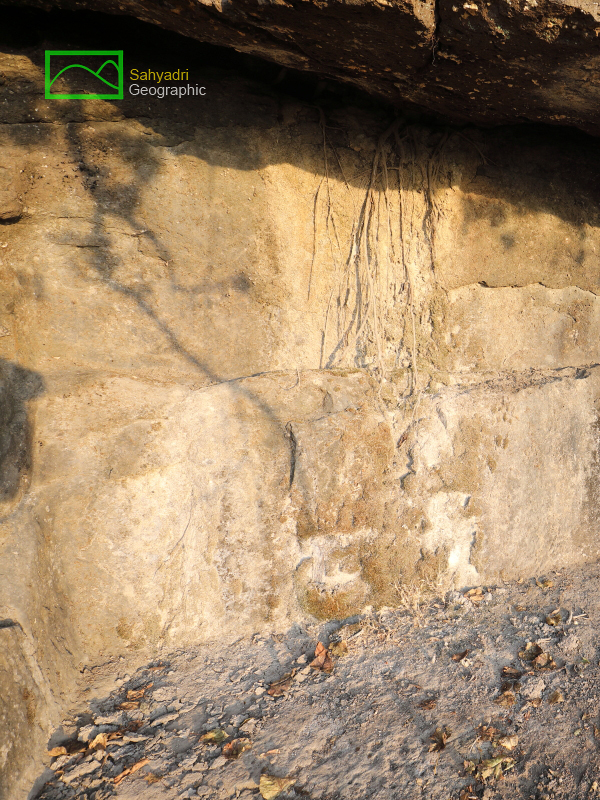 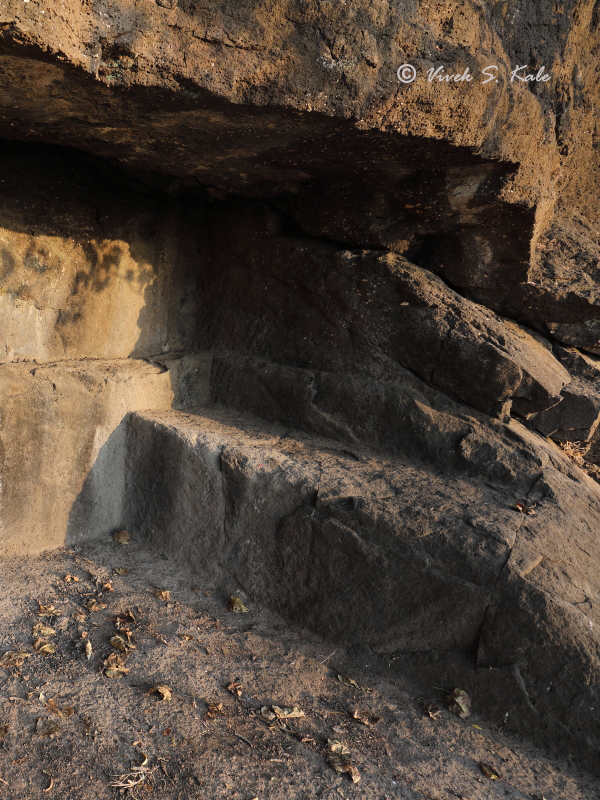 |
| |
| 43. Cave#6, Induri Caves, Maval Tehsil, Pune district, Maharashtra, India |
| |
|
|
| |
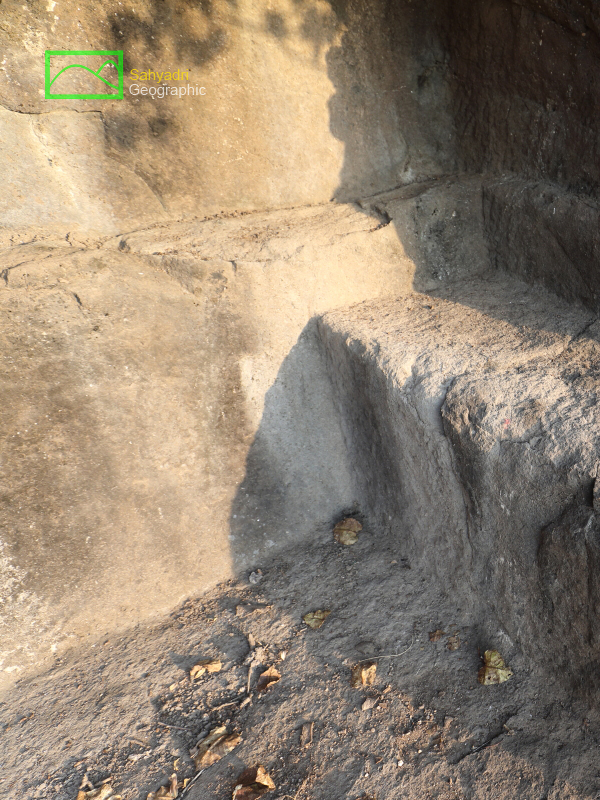 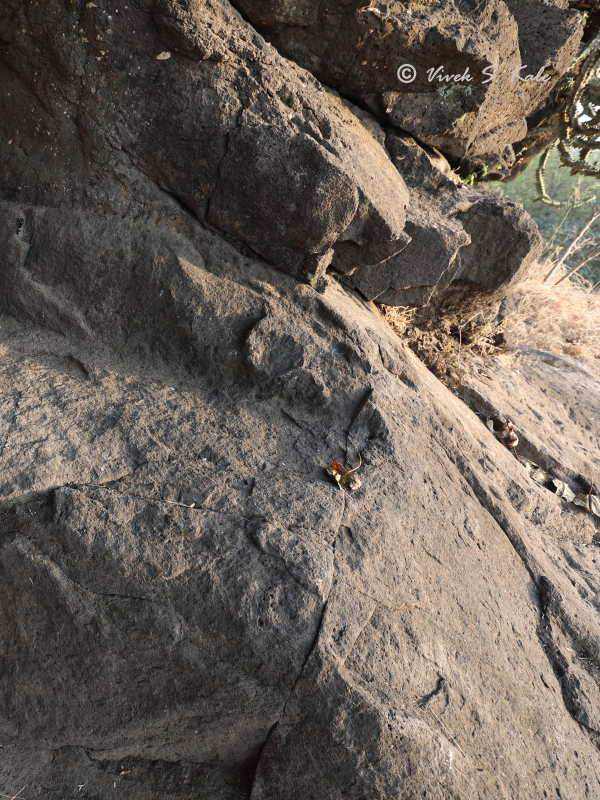 |
| |
| 44. Cave#6, Induri Caves, Maval Tehsil, Pune district, Maharashtra, India |
| |
|
|
| |
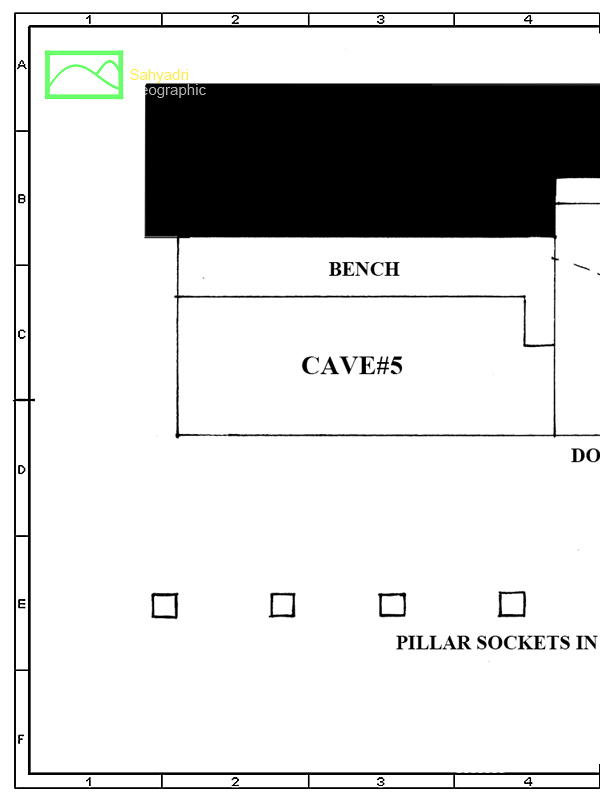 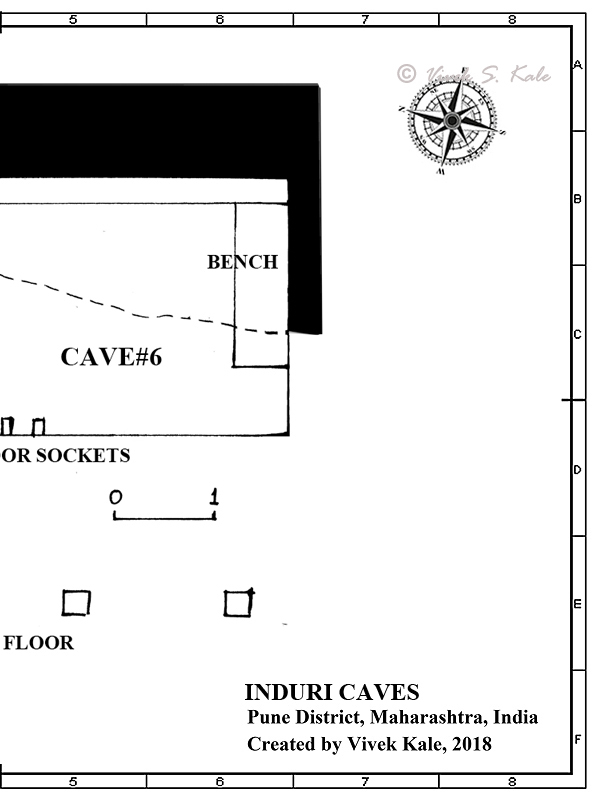 |
| |
| 45. Layout of Cave#5,6, Induri Caves, Maval Tehsil, Pune district, Maharashtra, India |
| |
|
|
| |
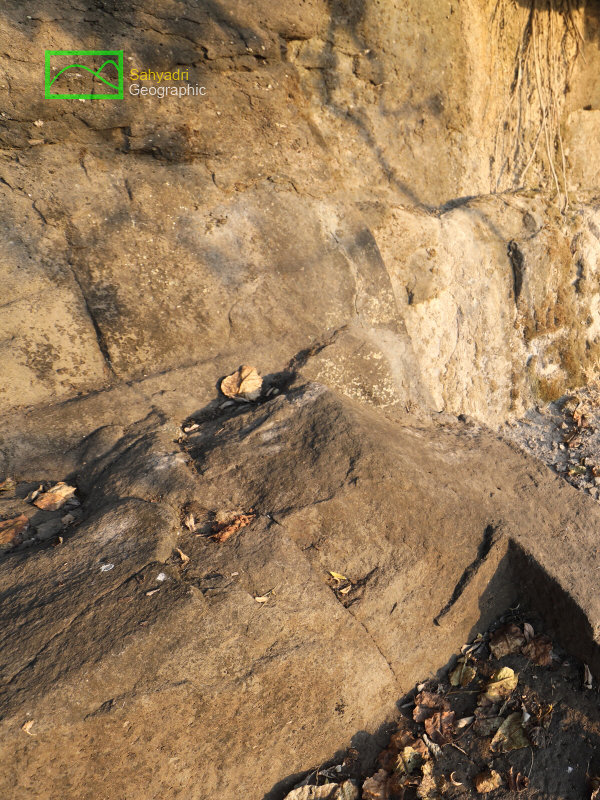 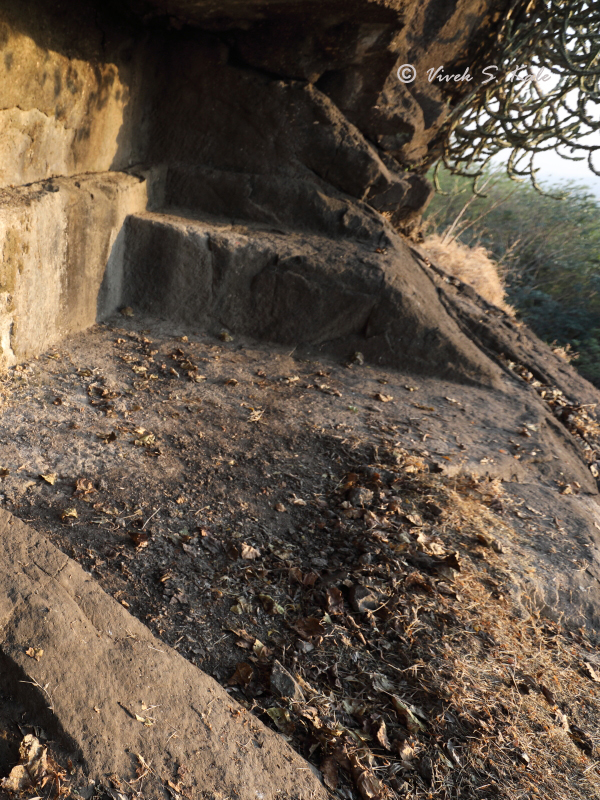 |
| |
| 46. Cave#6, Induri Caves, Maval Tehsil, Pune district, Maharashtra, India |
| |
|
|
| |
  |
| |
| 47. Cave#5, Induri Caves, Maval Tehsil, Pune district, Maharashtra, India |
| |
|
|
| |
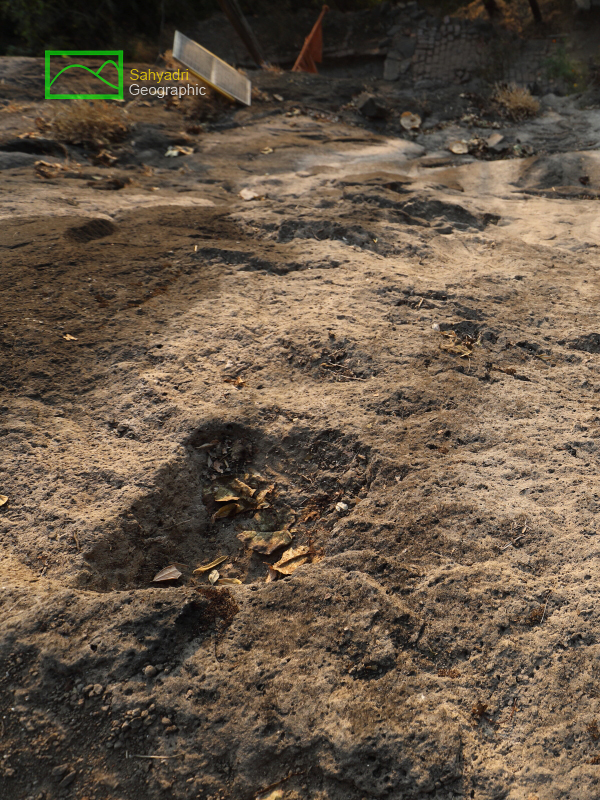  |
| |
| 48. Cave#5,6 sockets, Induri Caves, Maval Tehsil, Pune district, Maharashtra, India |
| |
|
|
| |
  |
| |
| 49. Cave#5,6, Induri Caves, Maval Tehsil, Pune district, Maharashtra, India |
| |
|
|
| |
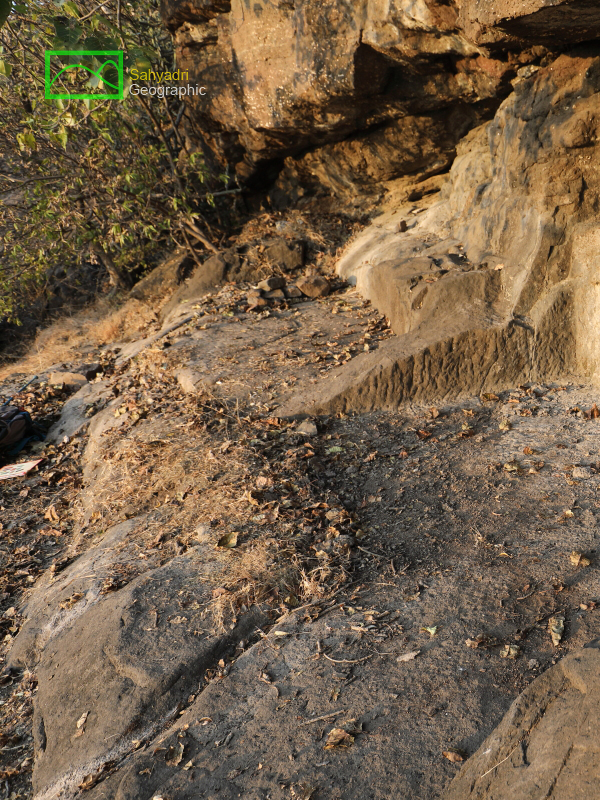 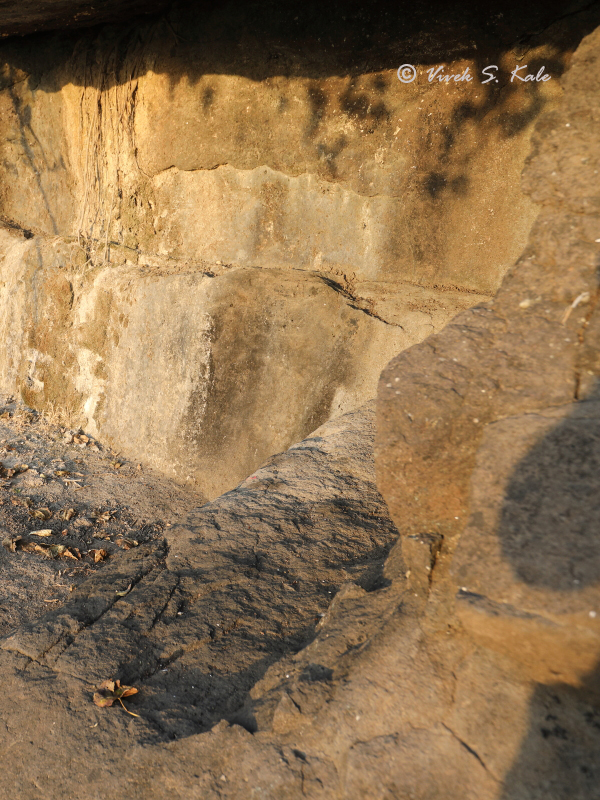 |
| |
| 50. Cave#6, Induri Caves, Maval Tehsil, Pune district, Maharashtra, India |
| |
|
|
| |
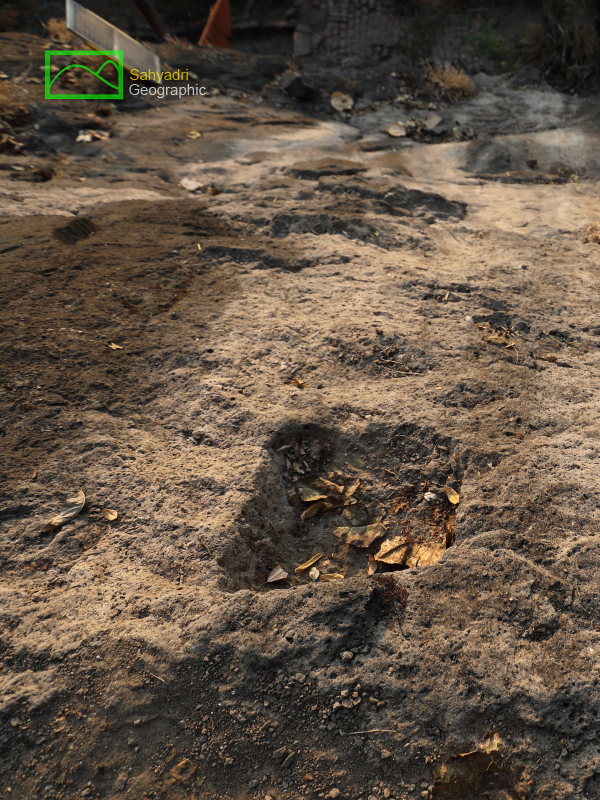 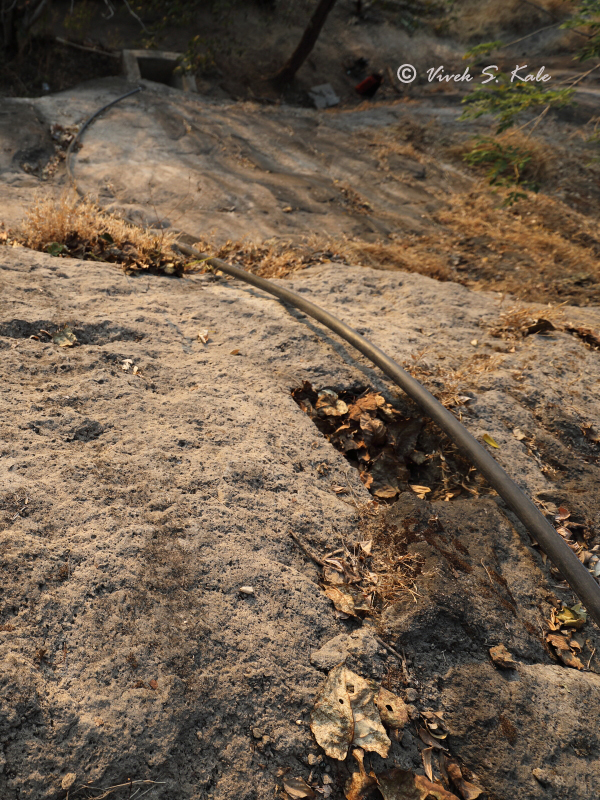 |
| |
| 51. Cave#5,6 sockets, Induri Caves, Maval Tehsil, Pune district, Maharashtra, India |
| |
|
|
| |
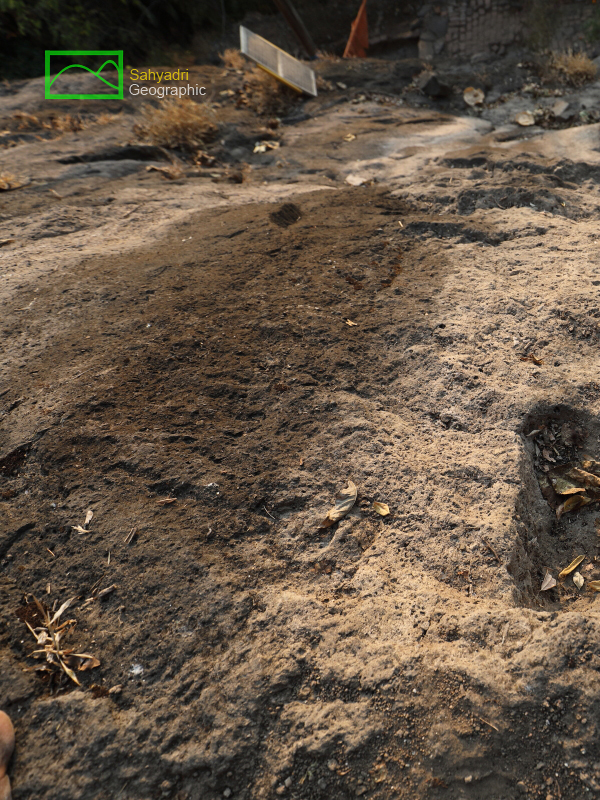 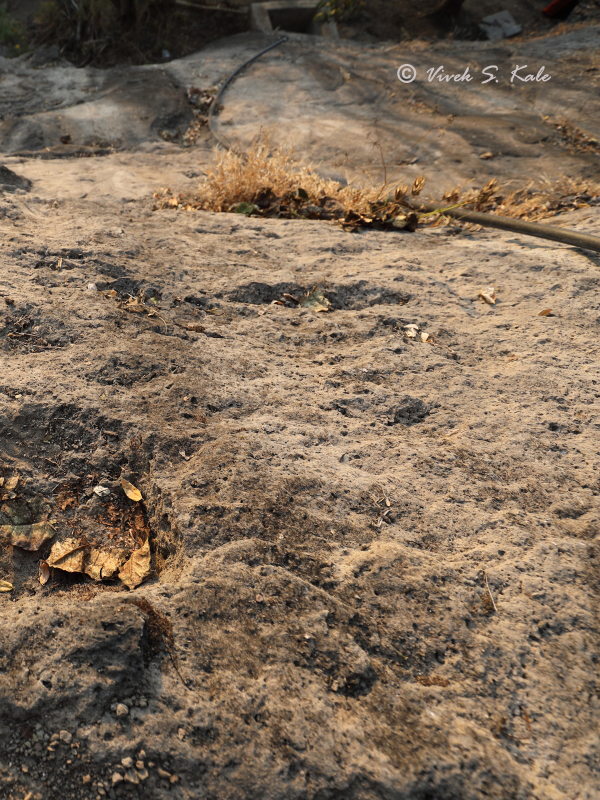 |
| |
| 52. Cave#5,6 sockets, Induri Caves, Maval Tehsil, Pune district, Maharashtra, India |
| |
|
|
| |
 |
| |
|
|
References :
1. Cave temples of India, London, 1880, Fergusson James and Burgess James.
2. Gazetters of Bombay Presidency, Poona District, Volume XVIII, 1885.
3. Buddhist architecture of western India, 1981, S. Nagraju.
4. Myth and Reality, Studies in the Formation of Indian Culture
by D. D. Kosambi
5. History and Society, Problems of Interpretation, by D. D. Kosambi
6. Newly Discovered Buddhist Rock-cut Caves of Maharashtra: An Appraisal by Dr. Shrikant P. Ganvir
|
| |
|
|
| |
|













































































































